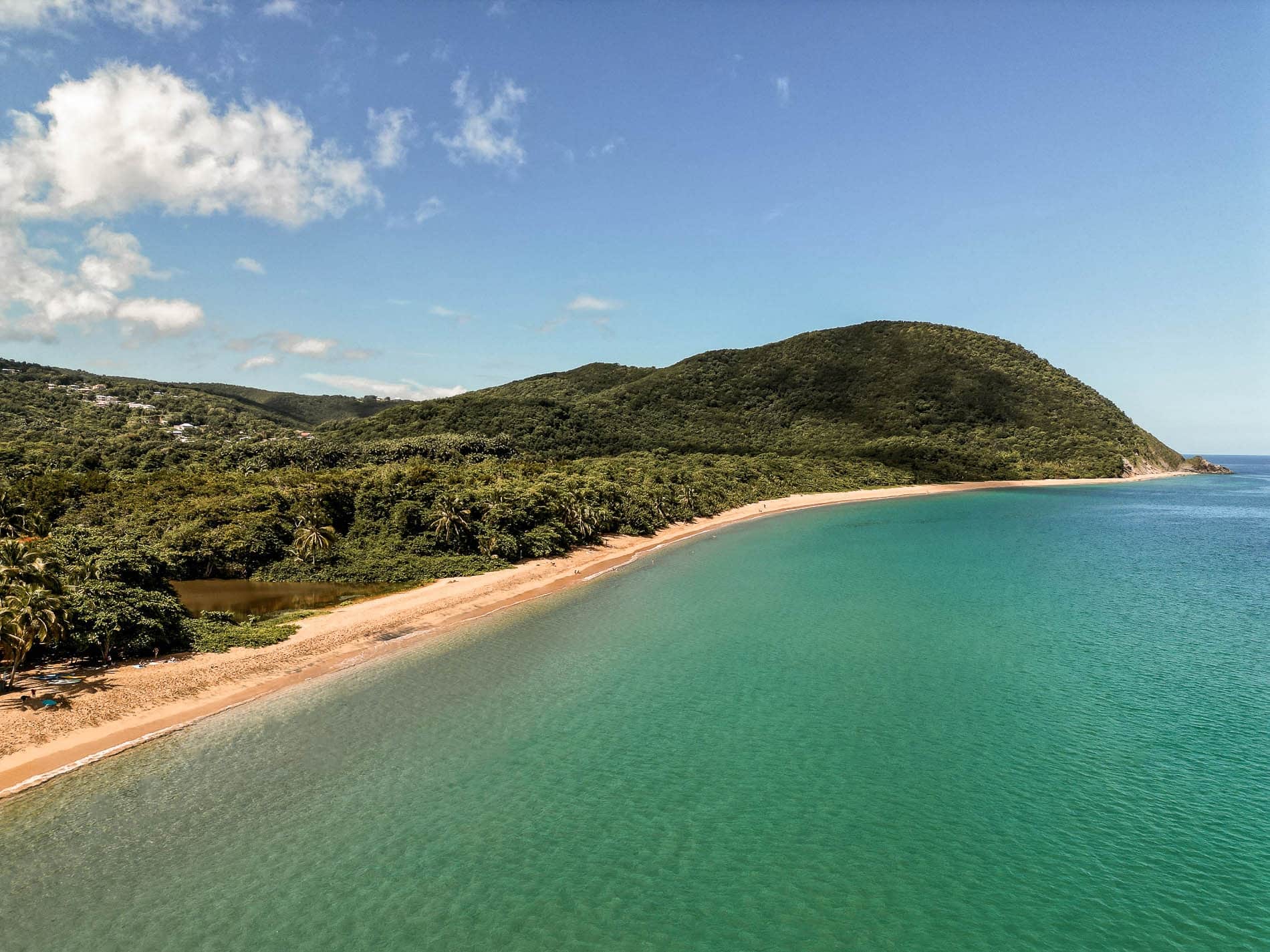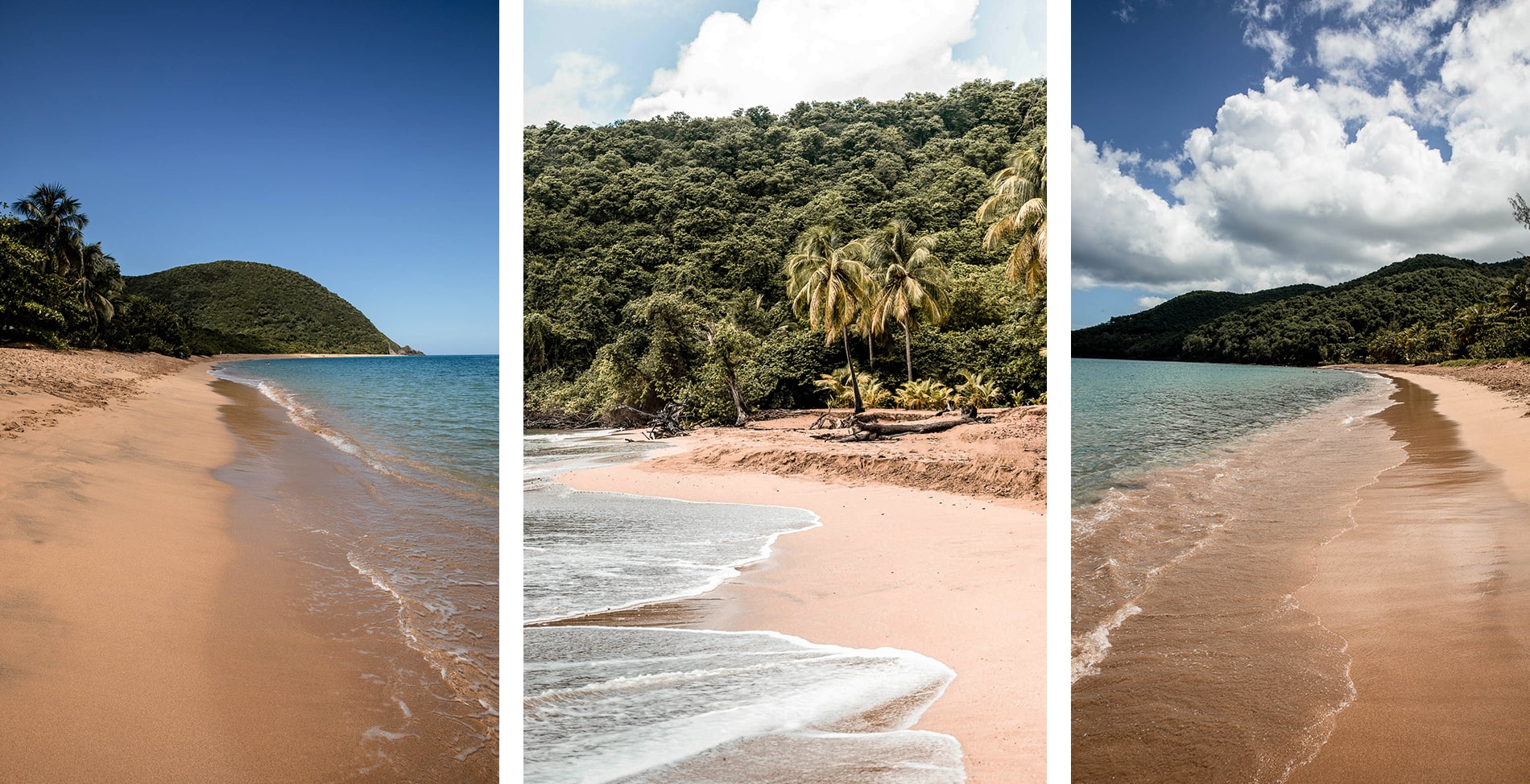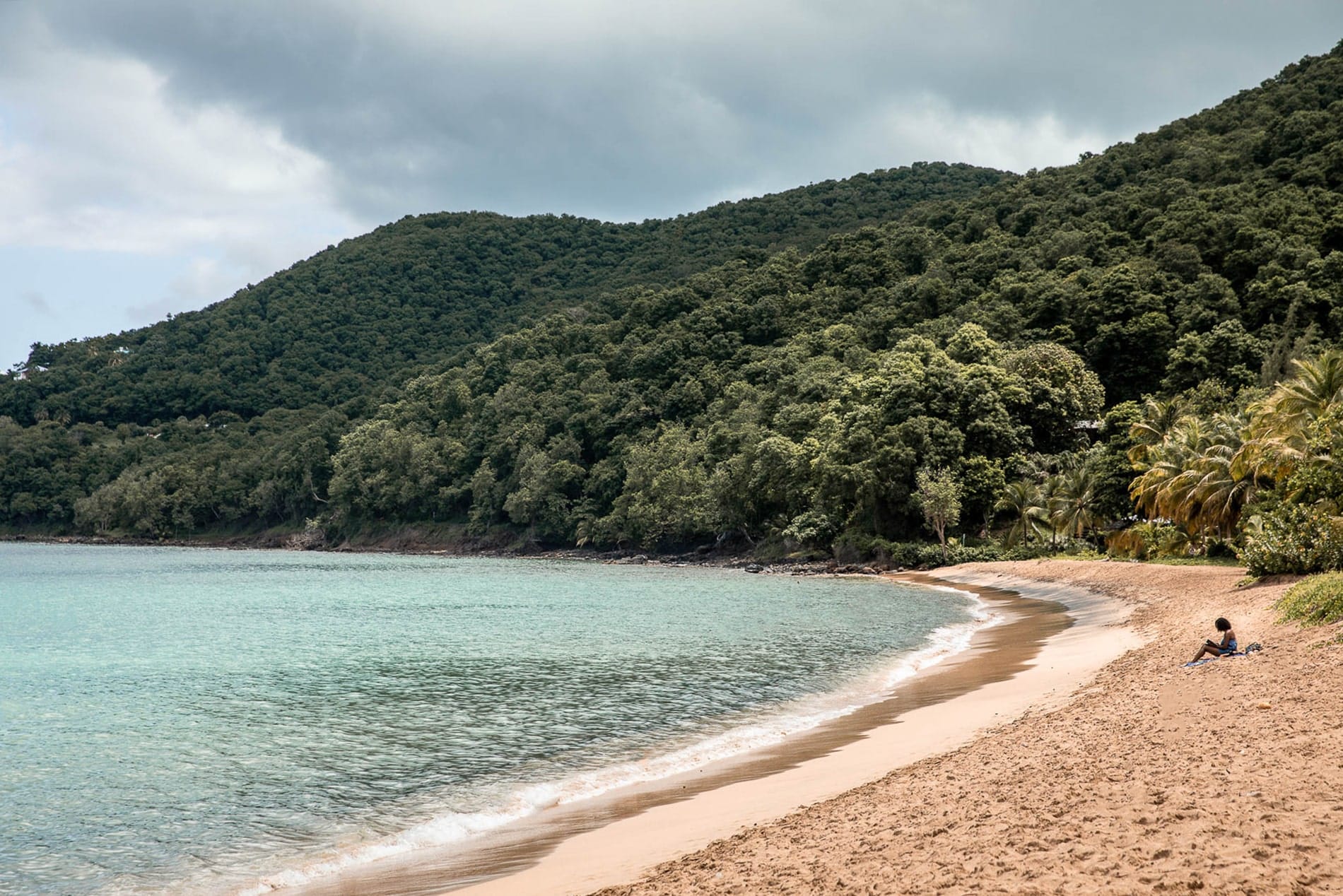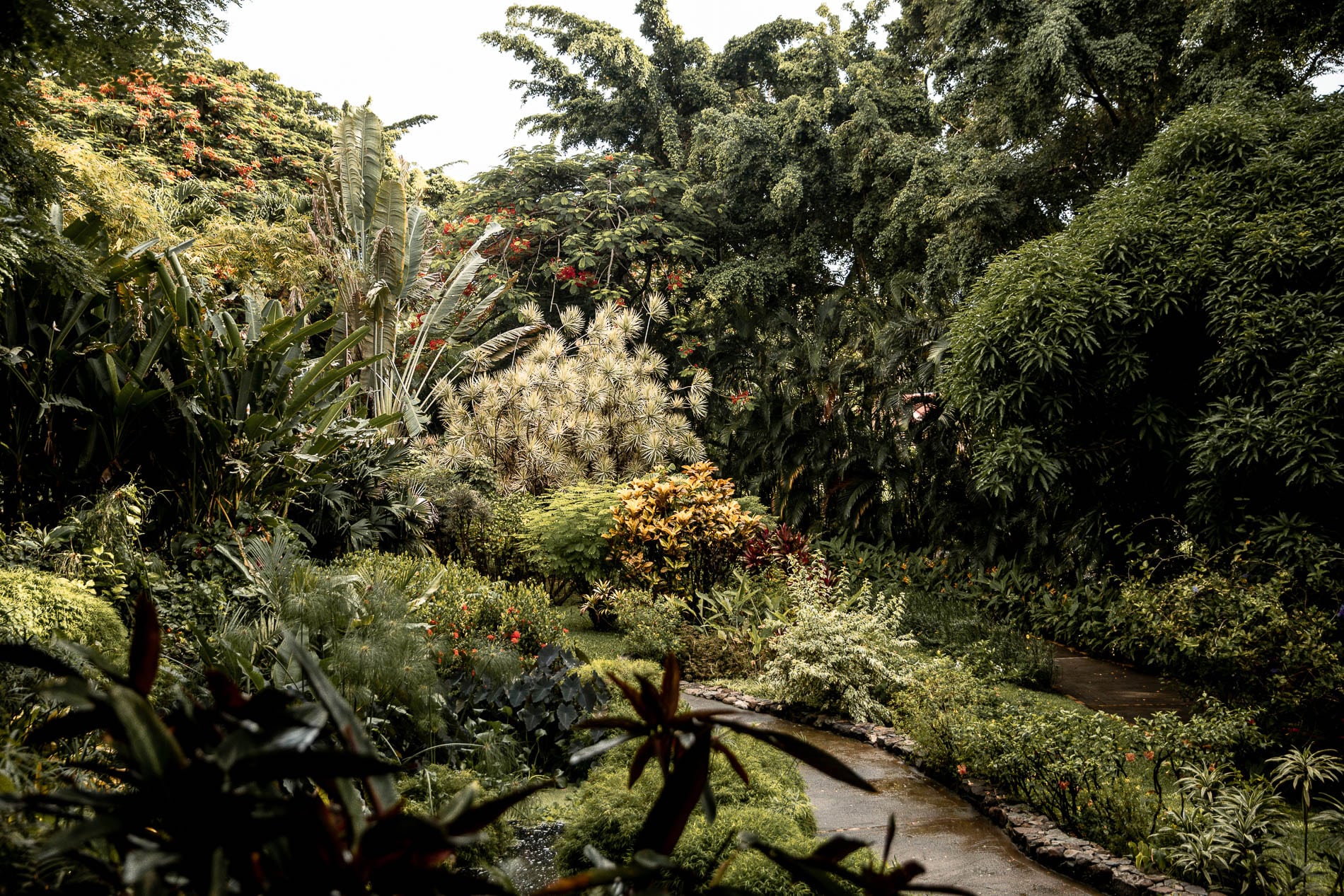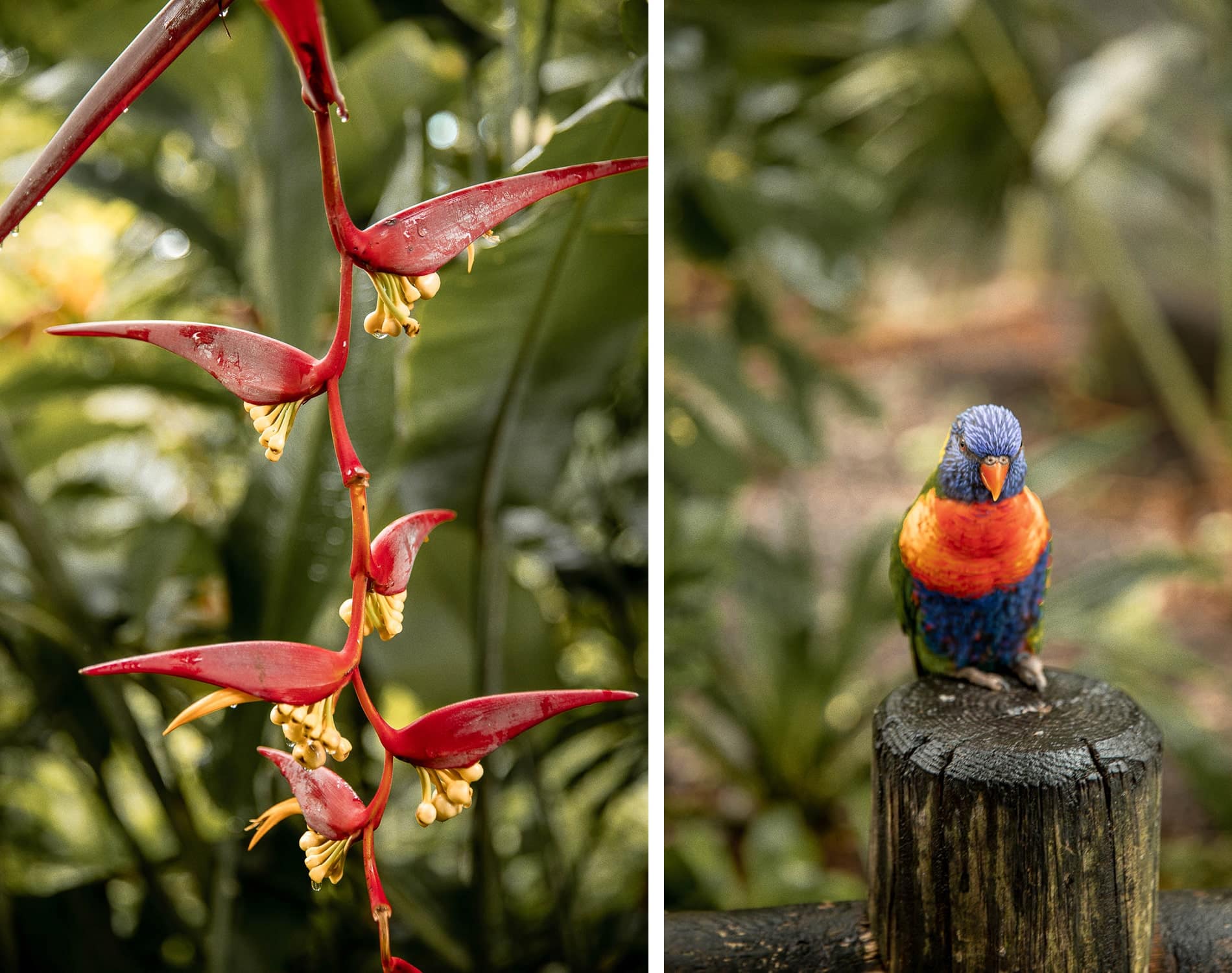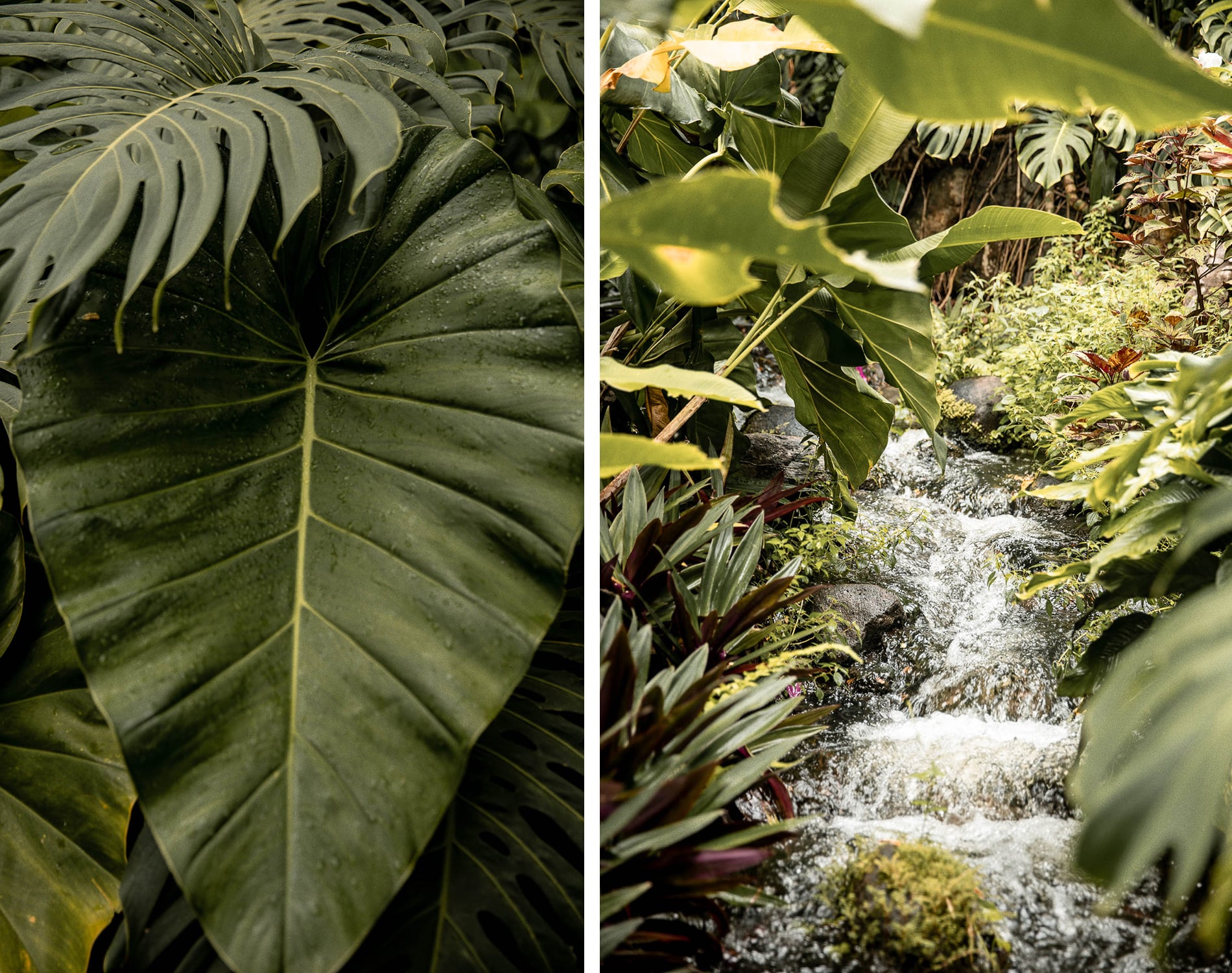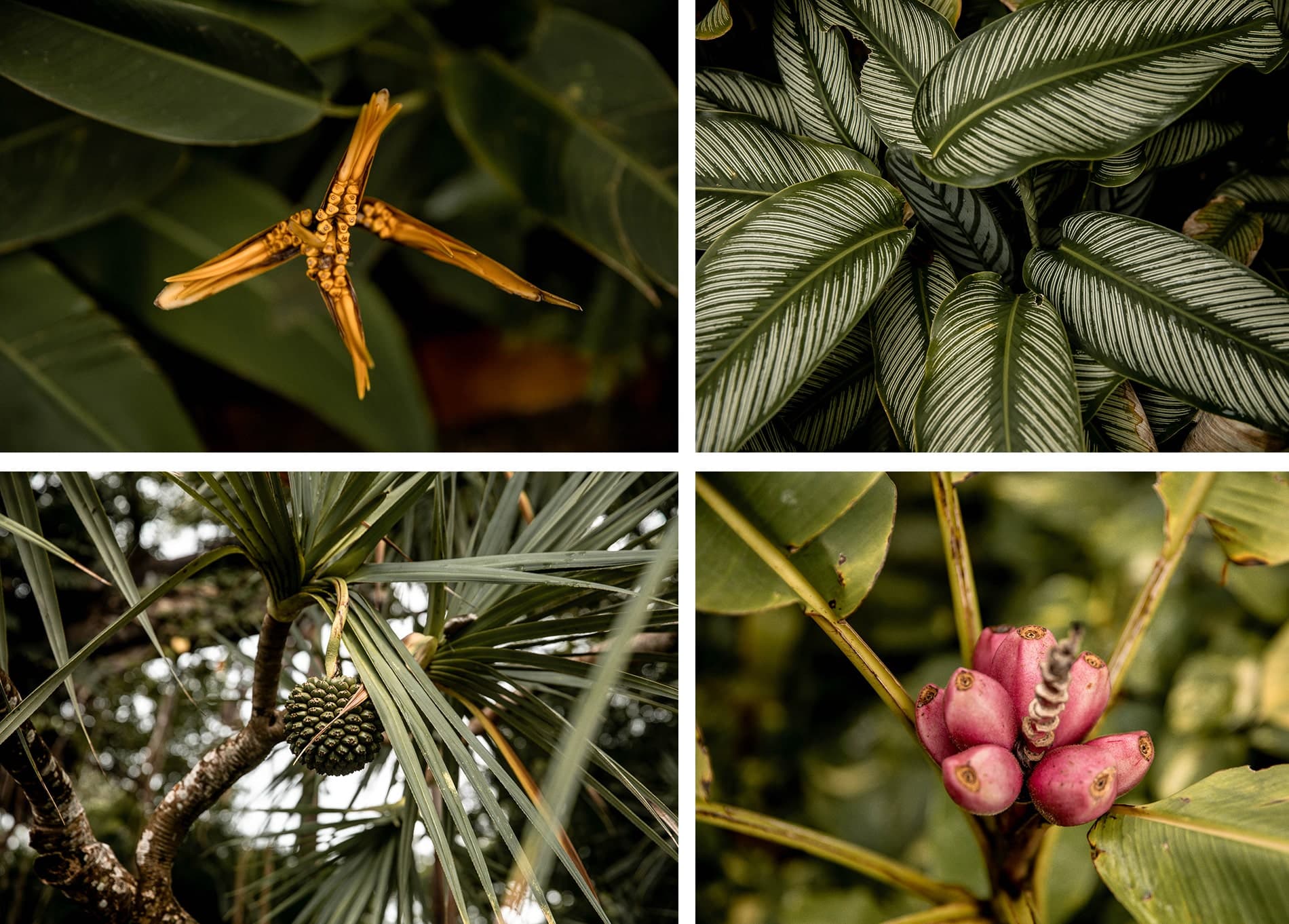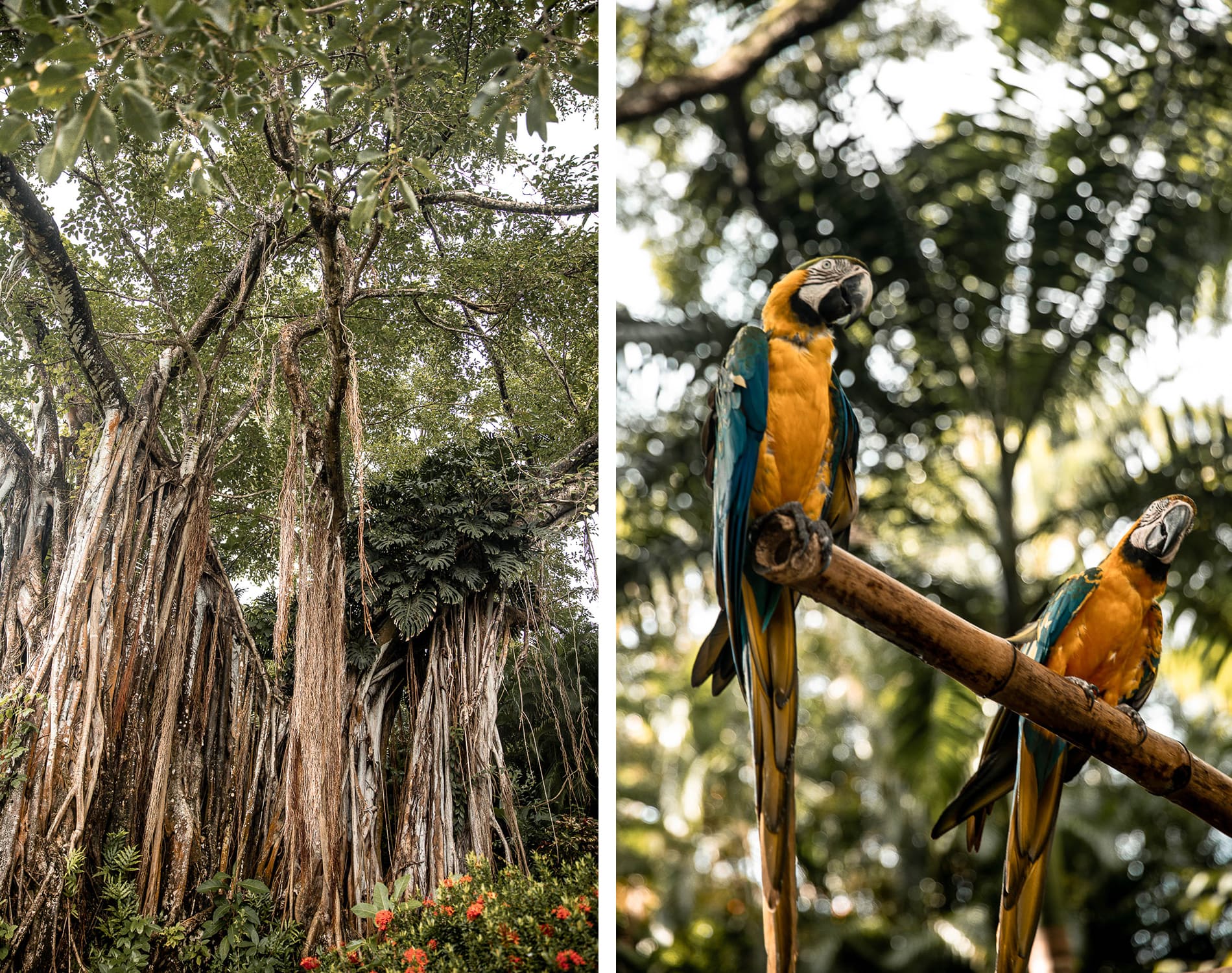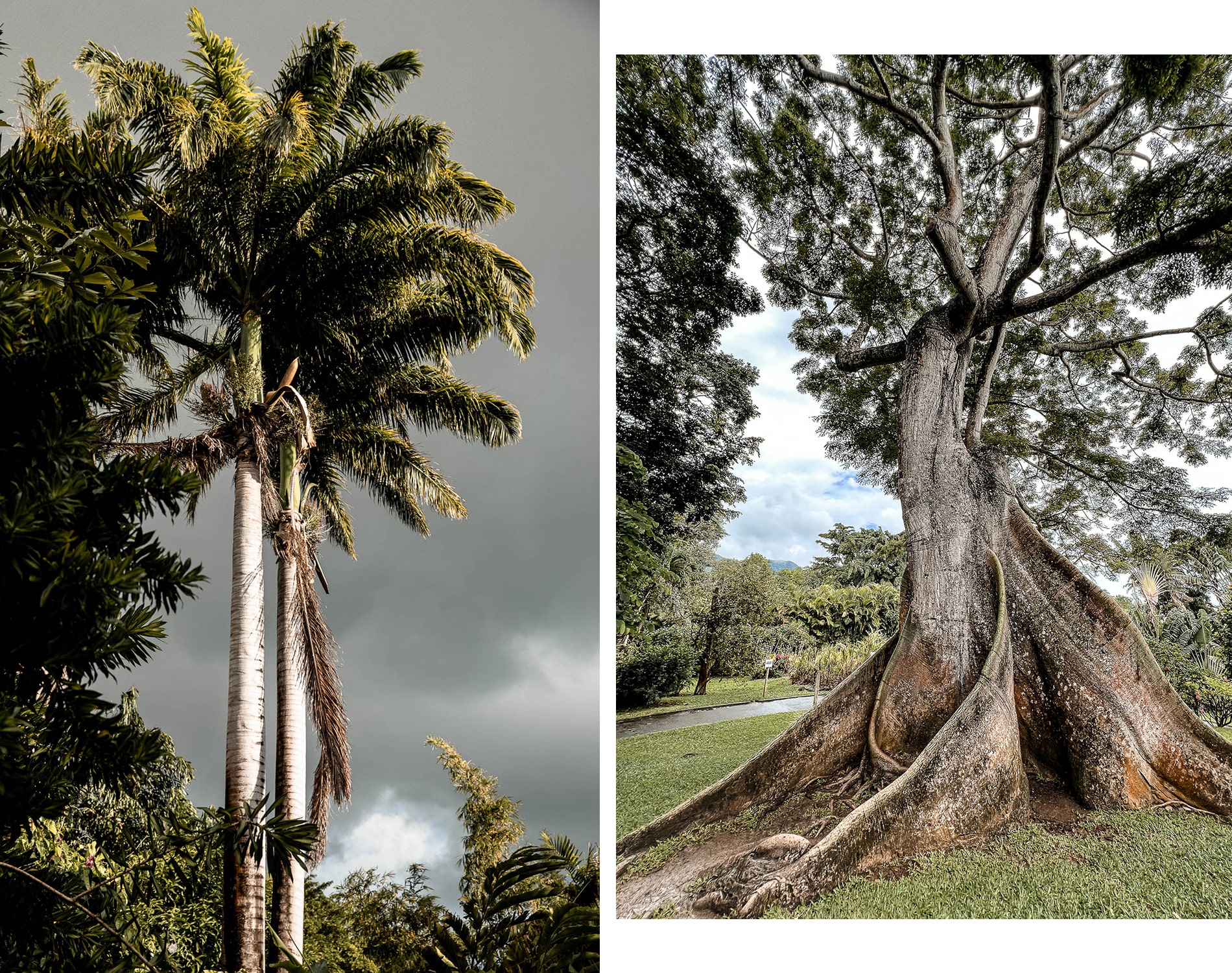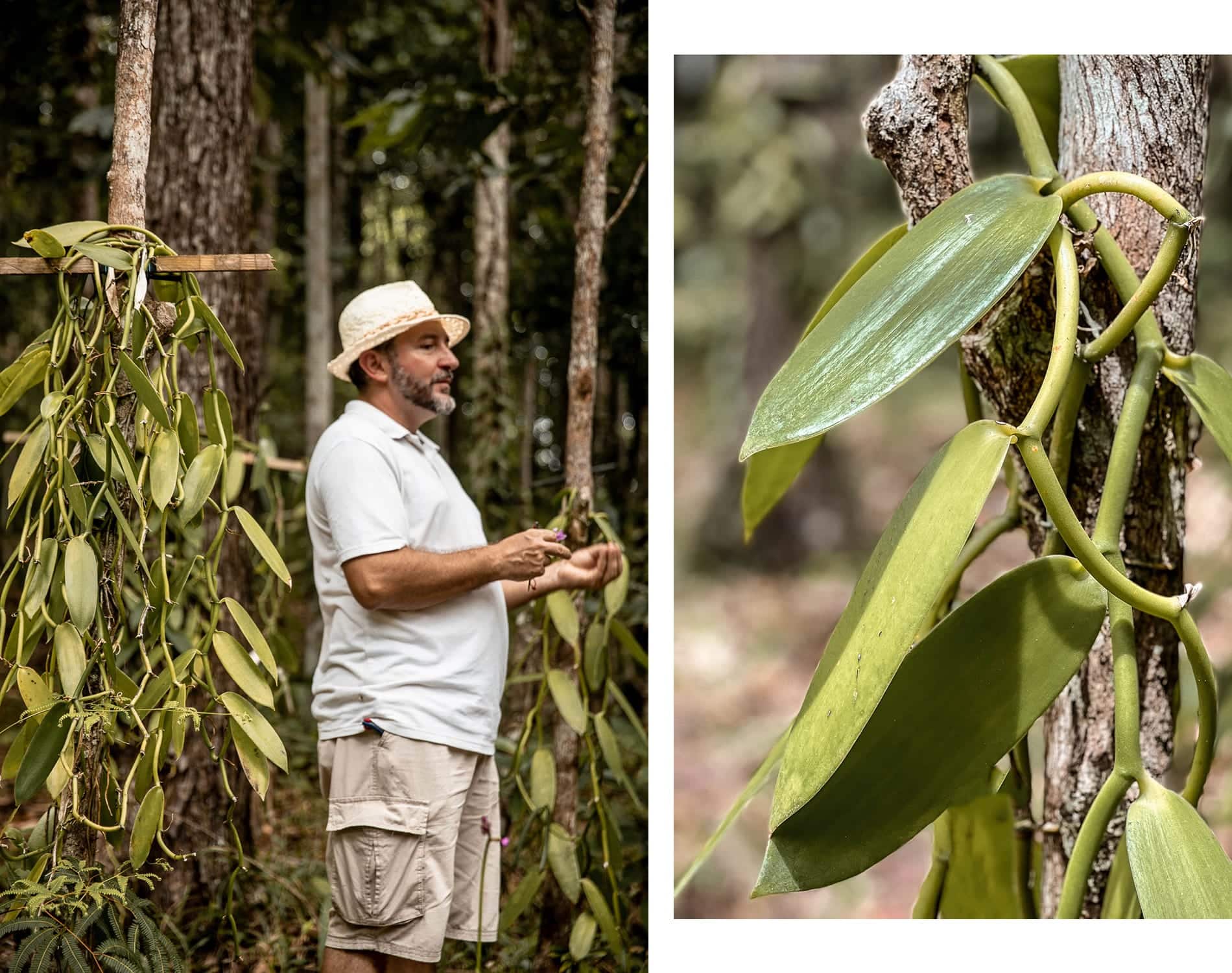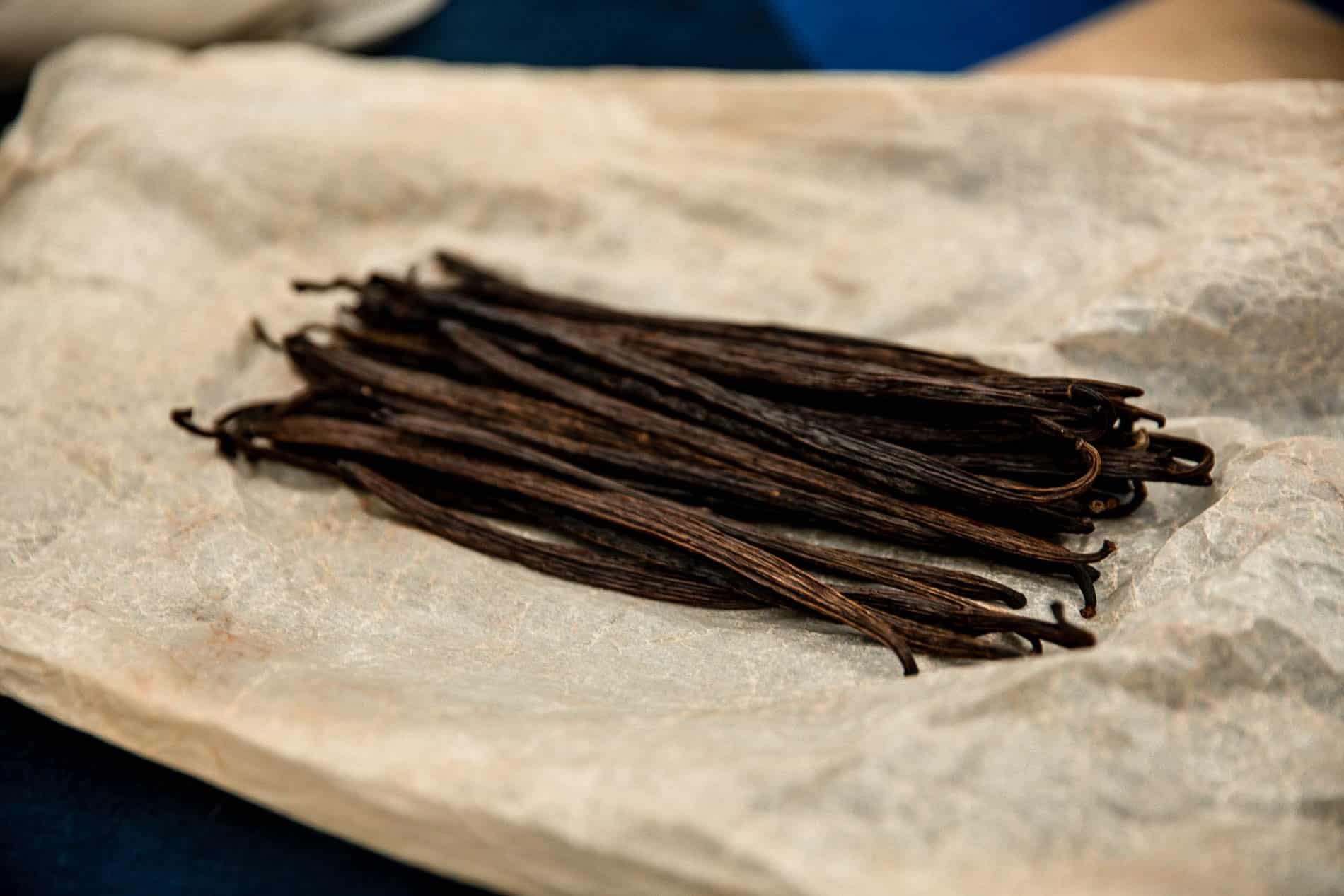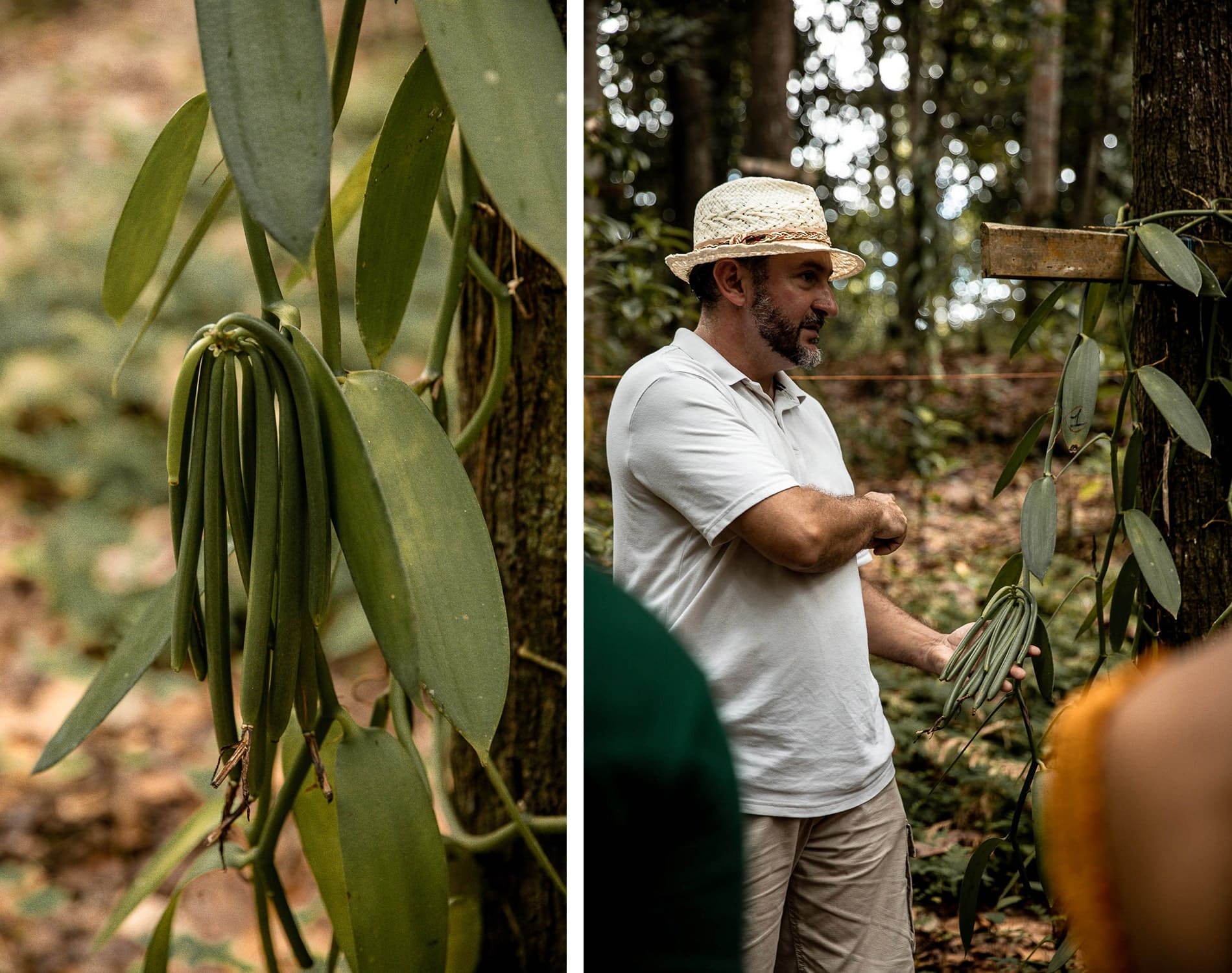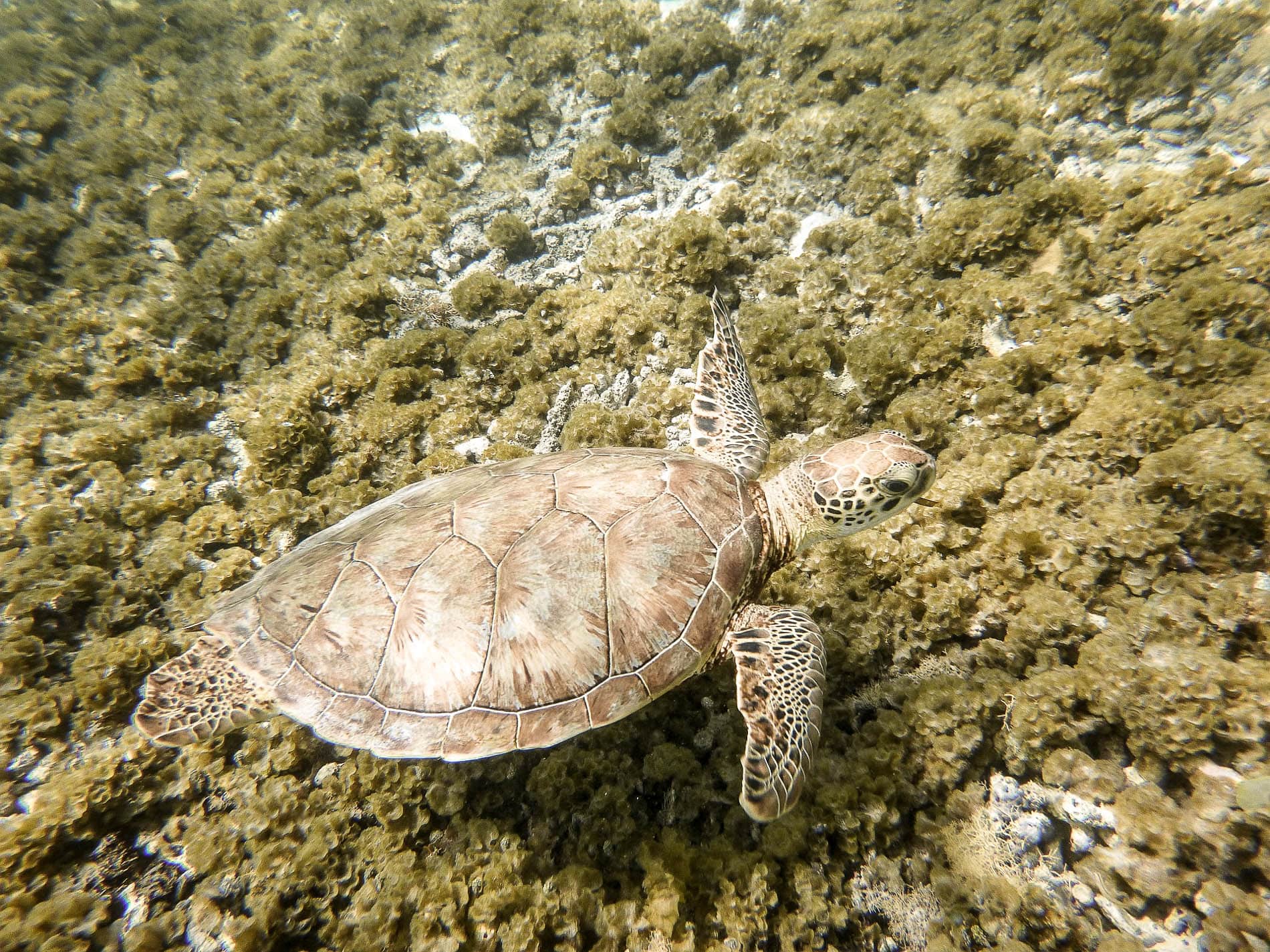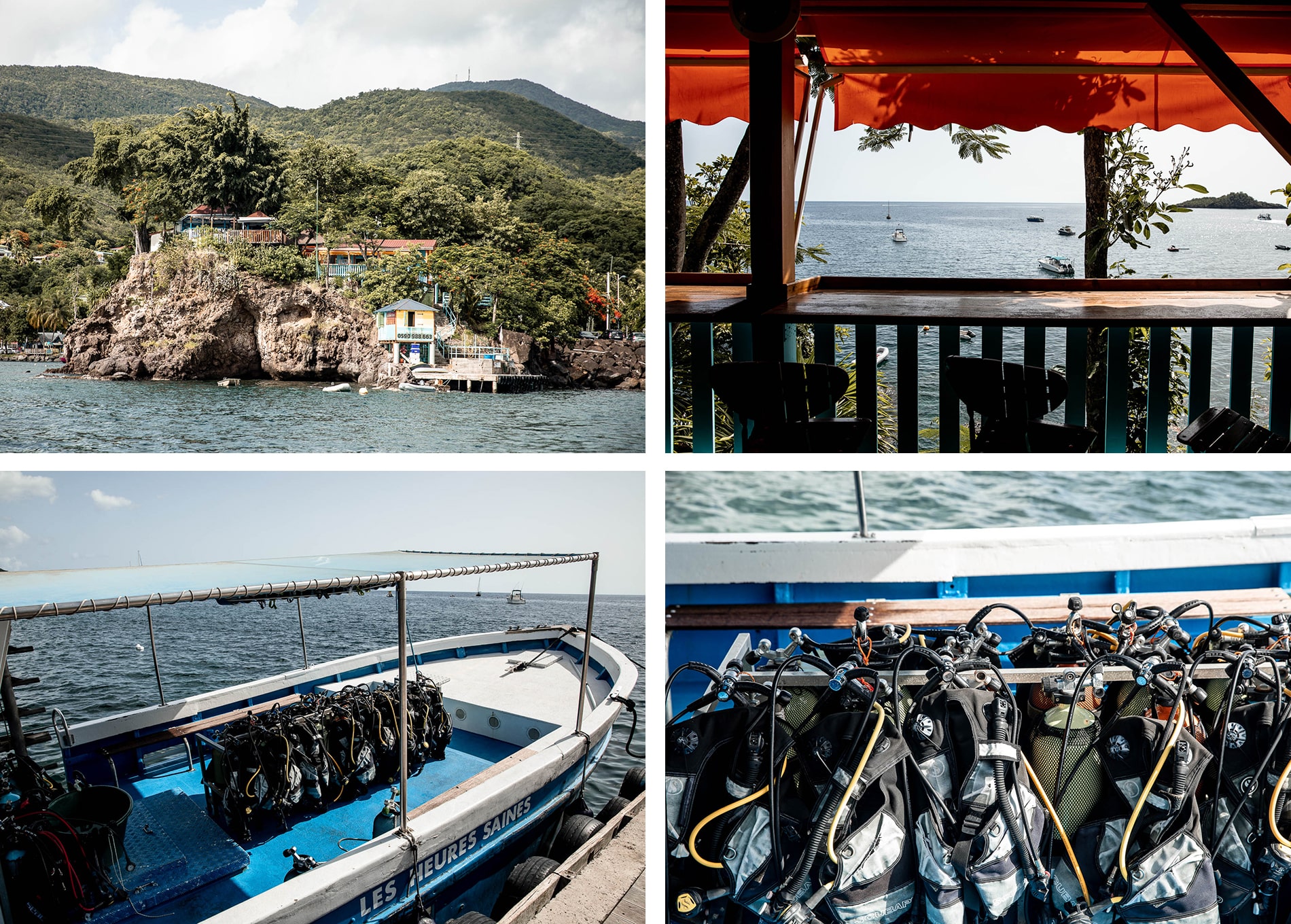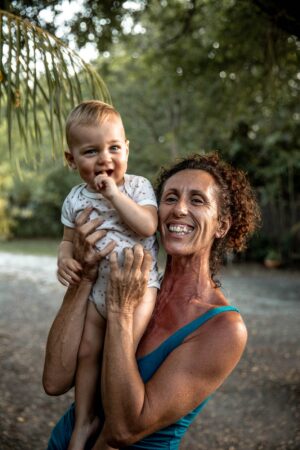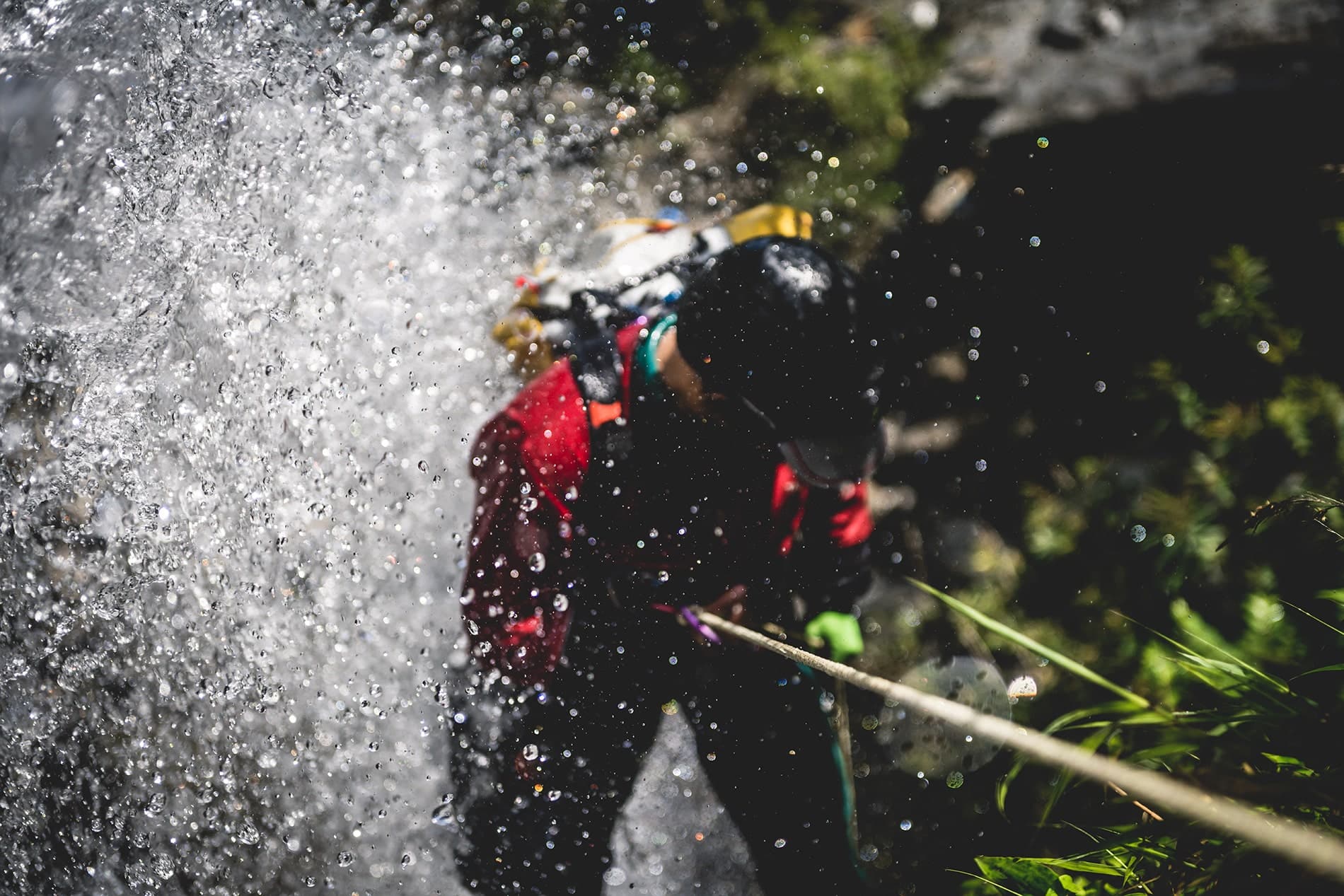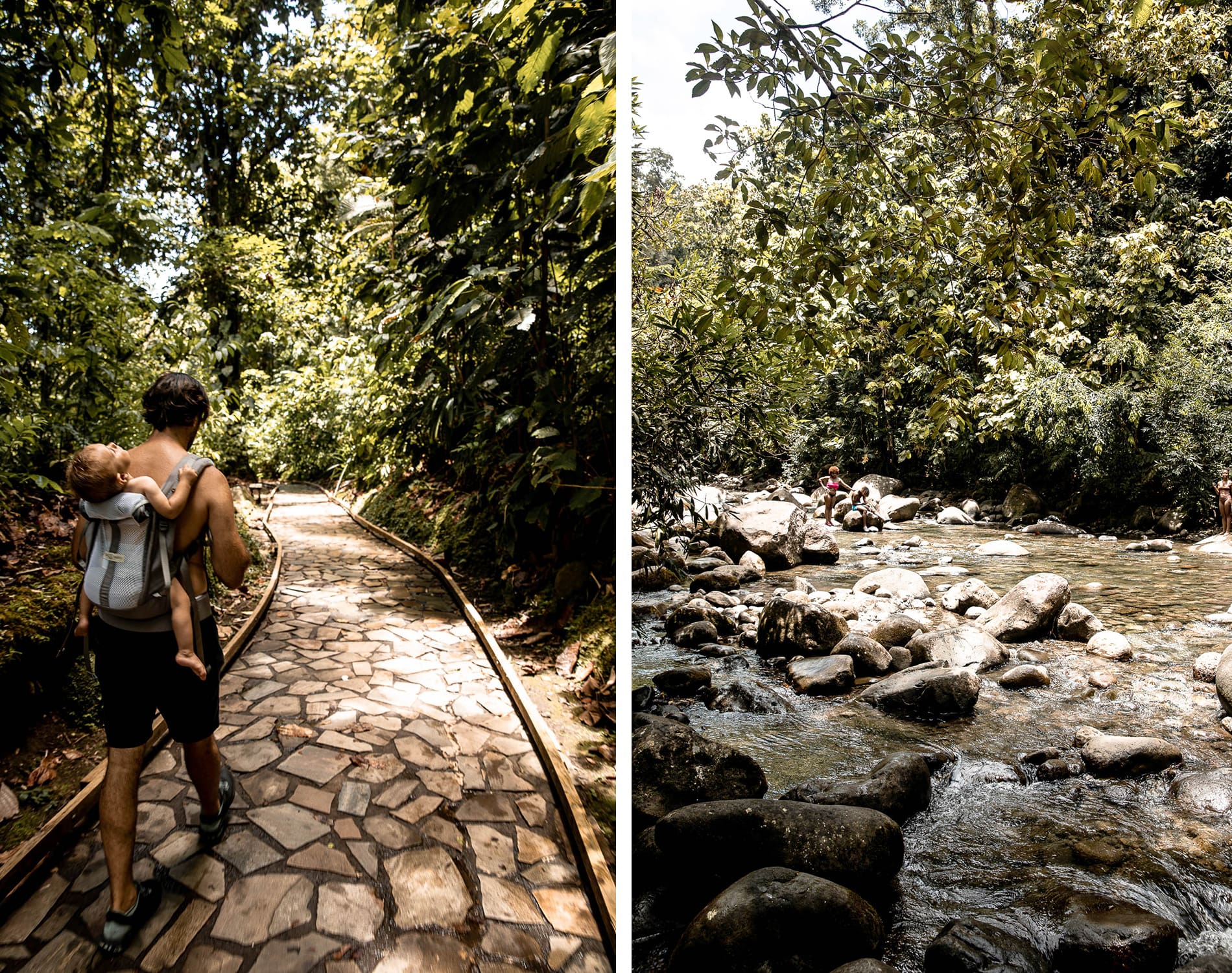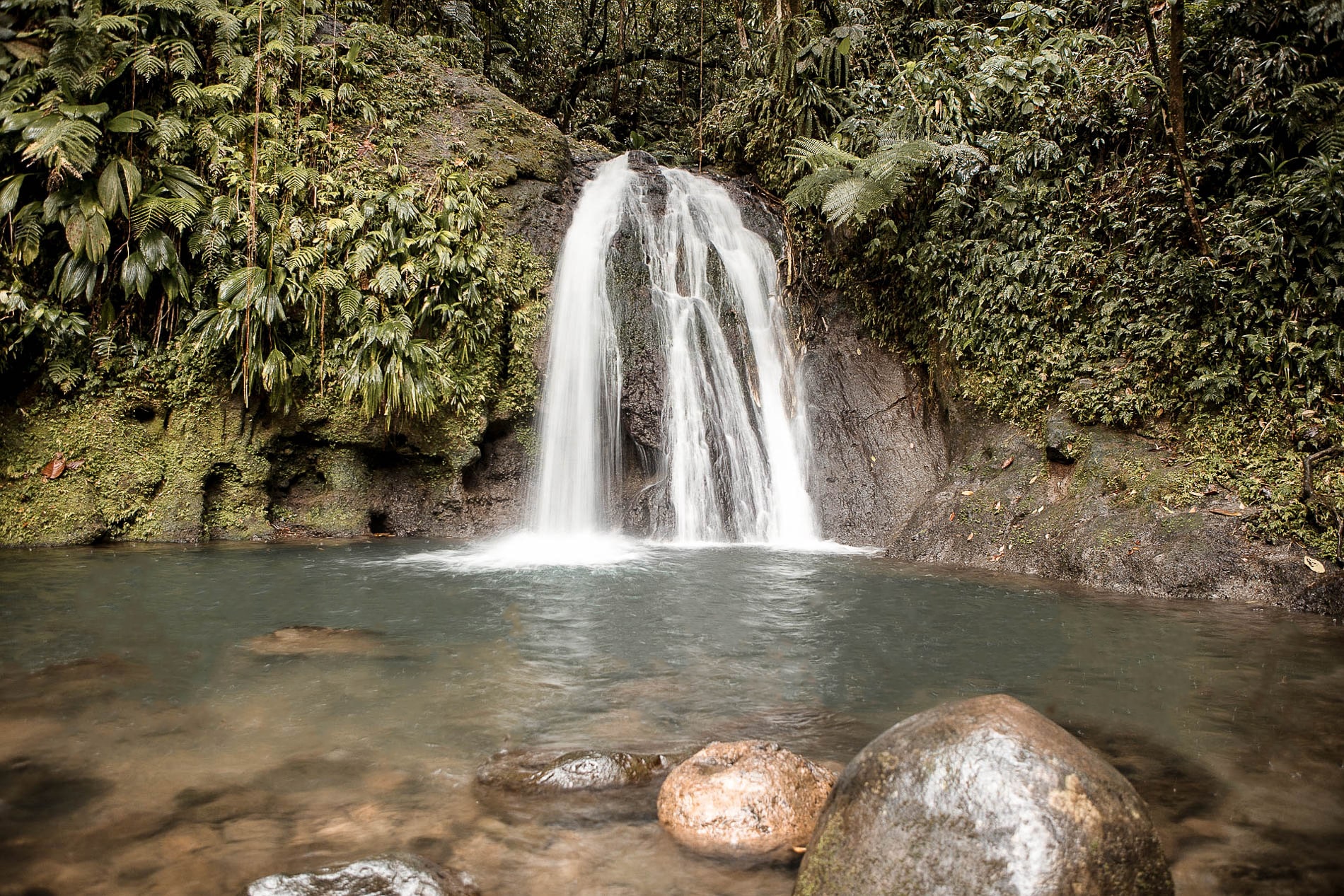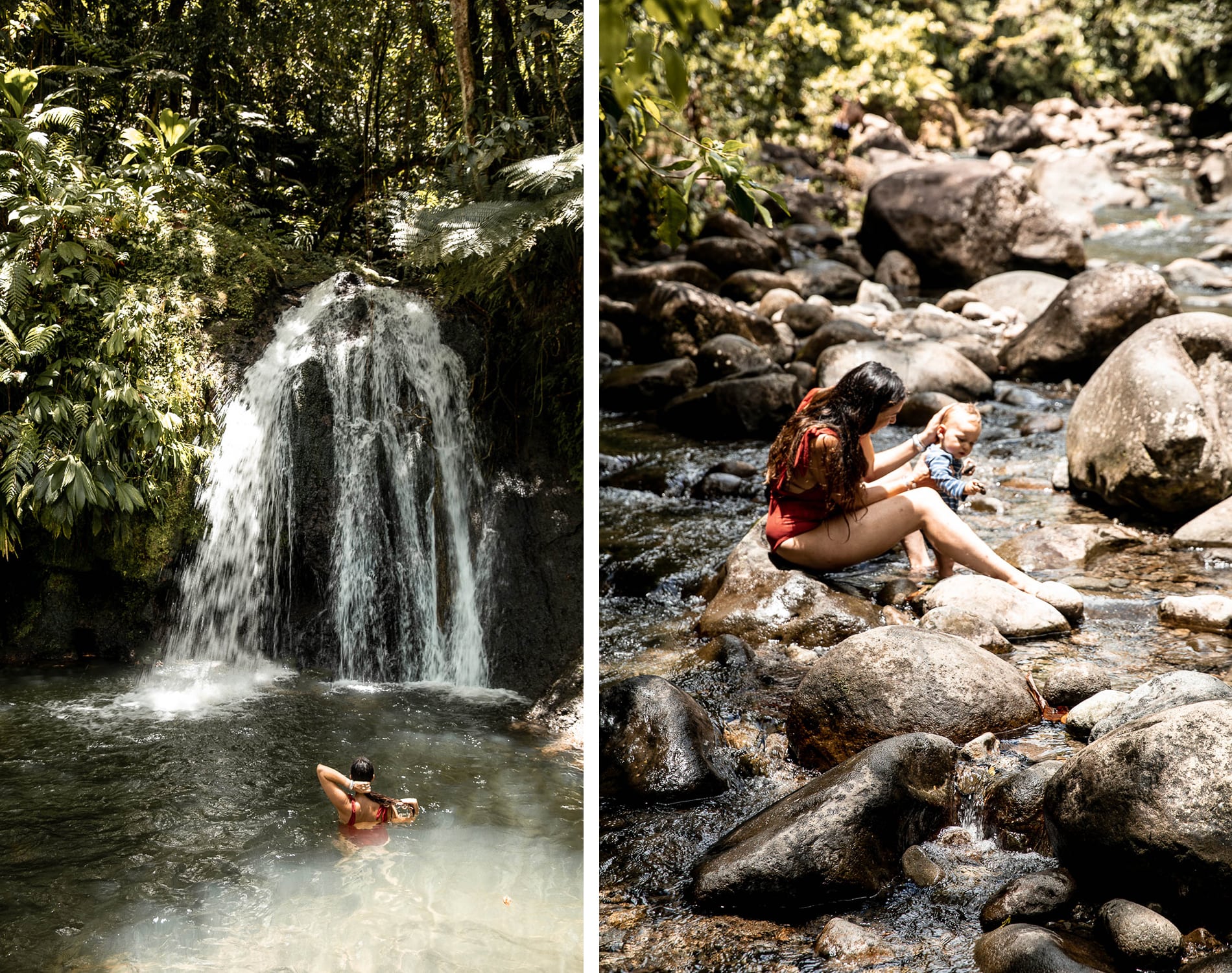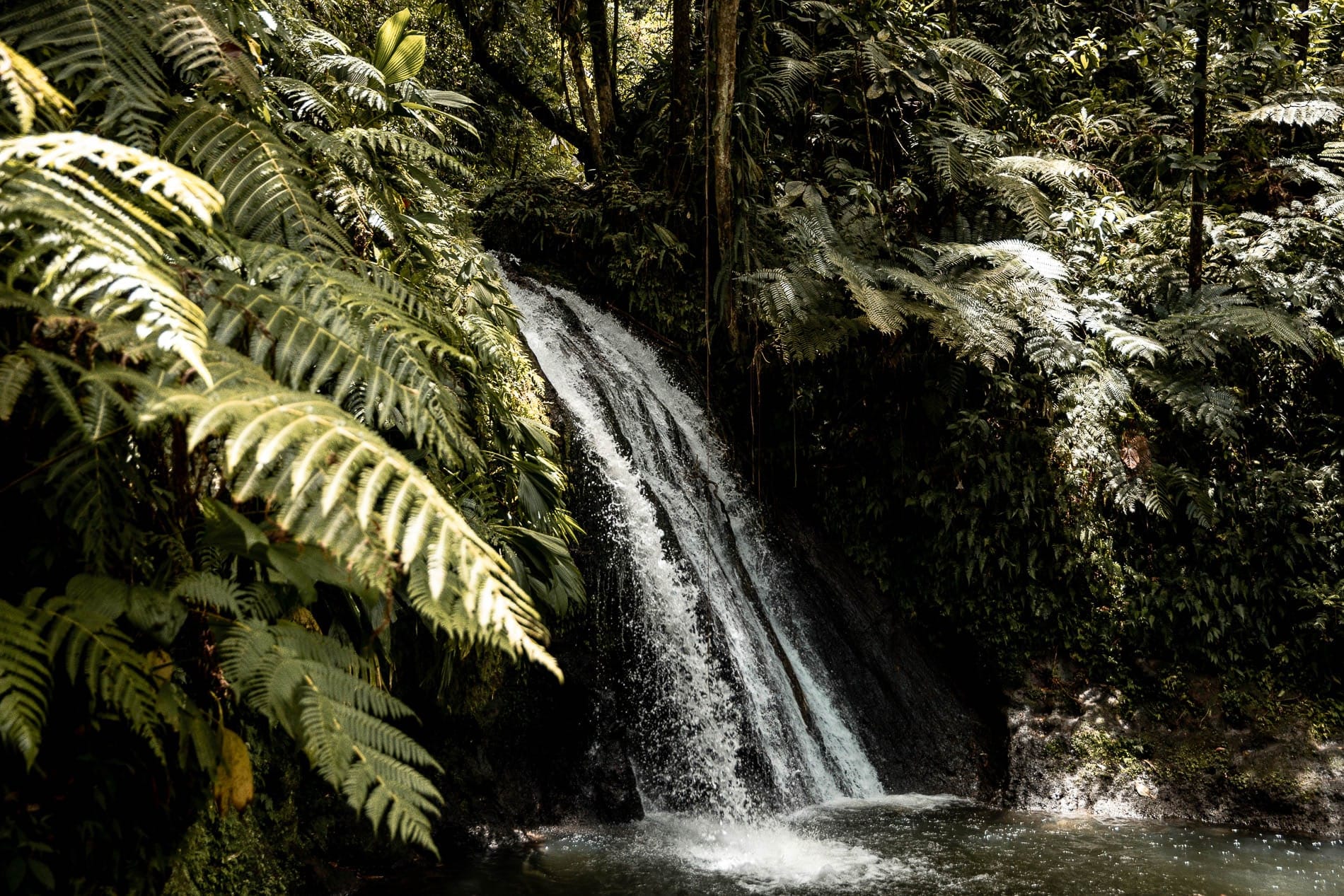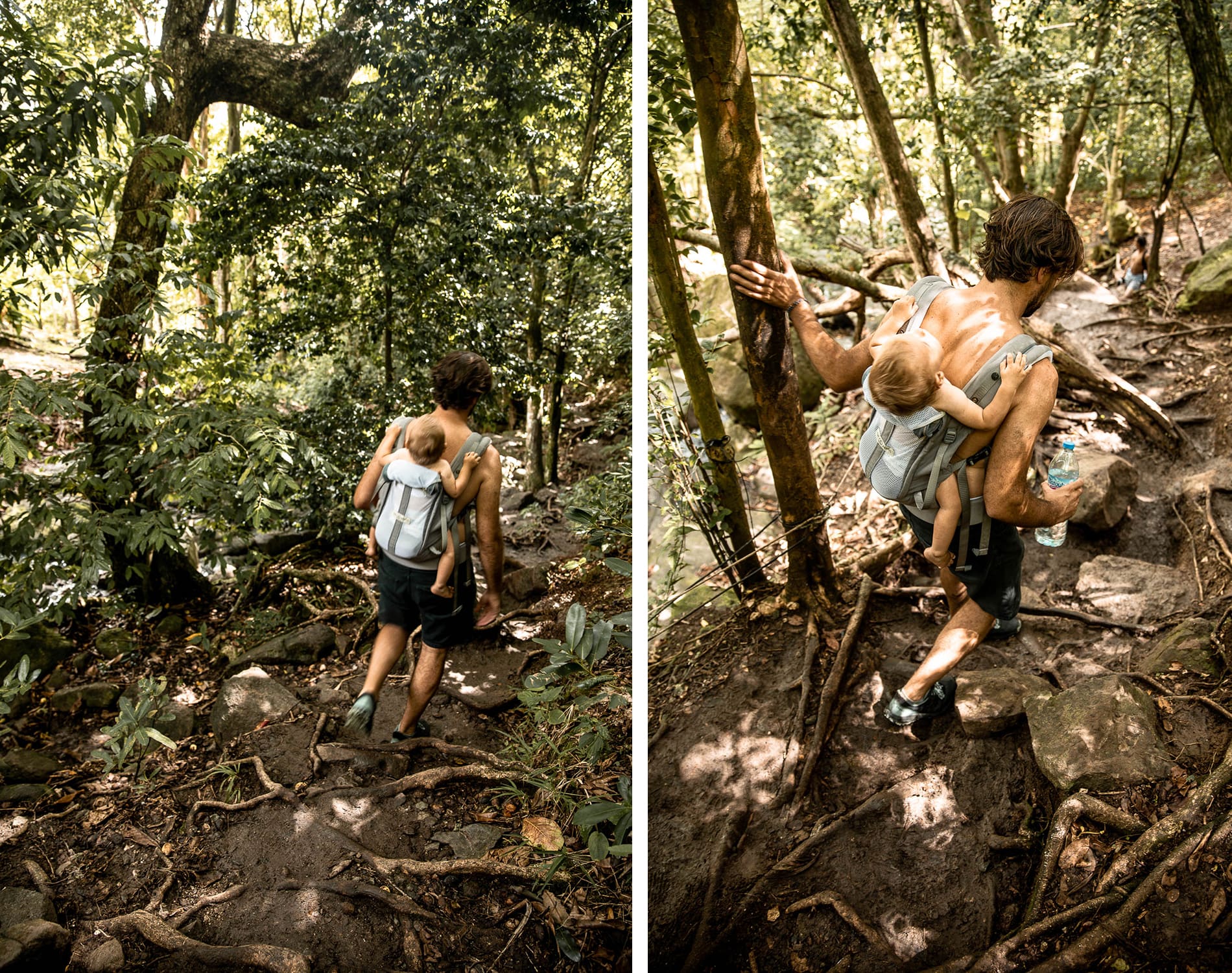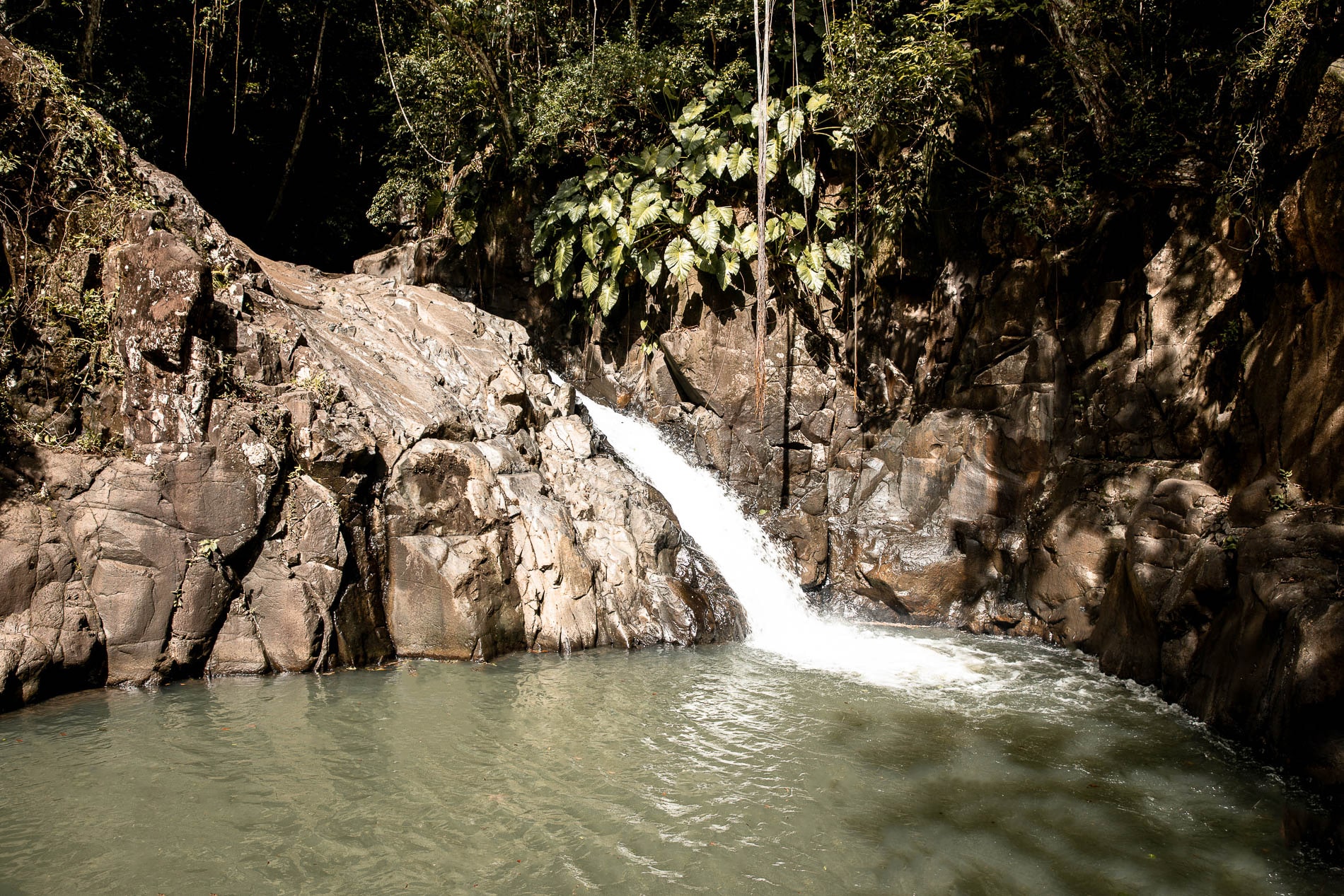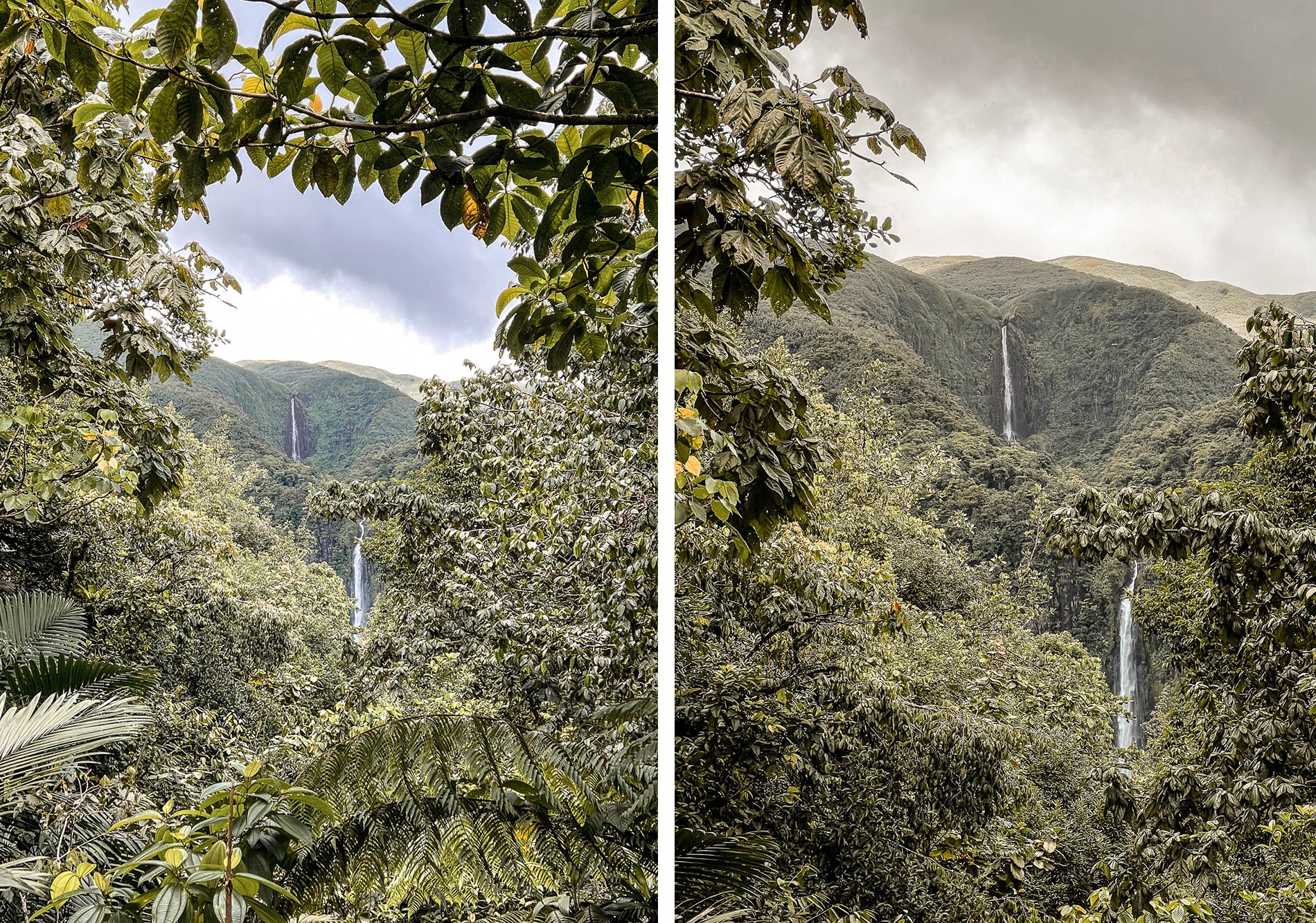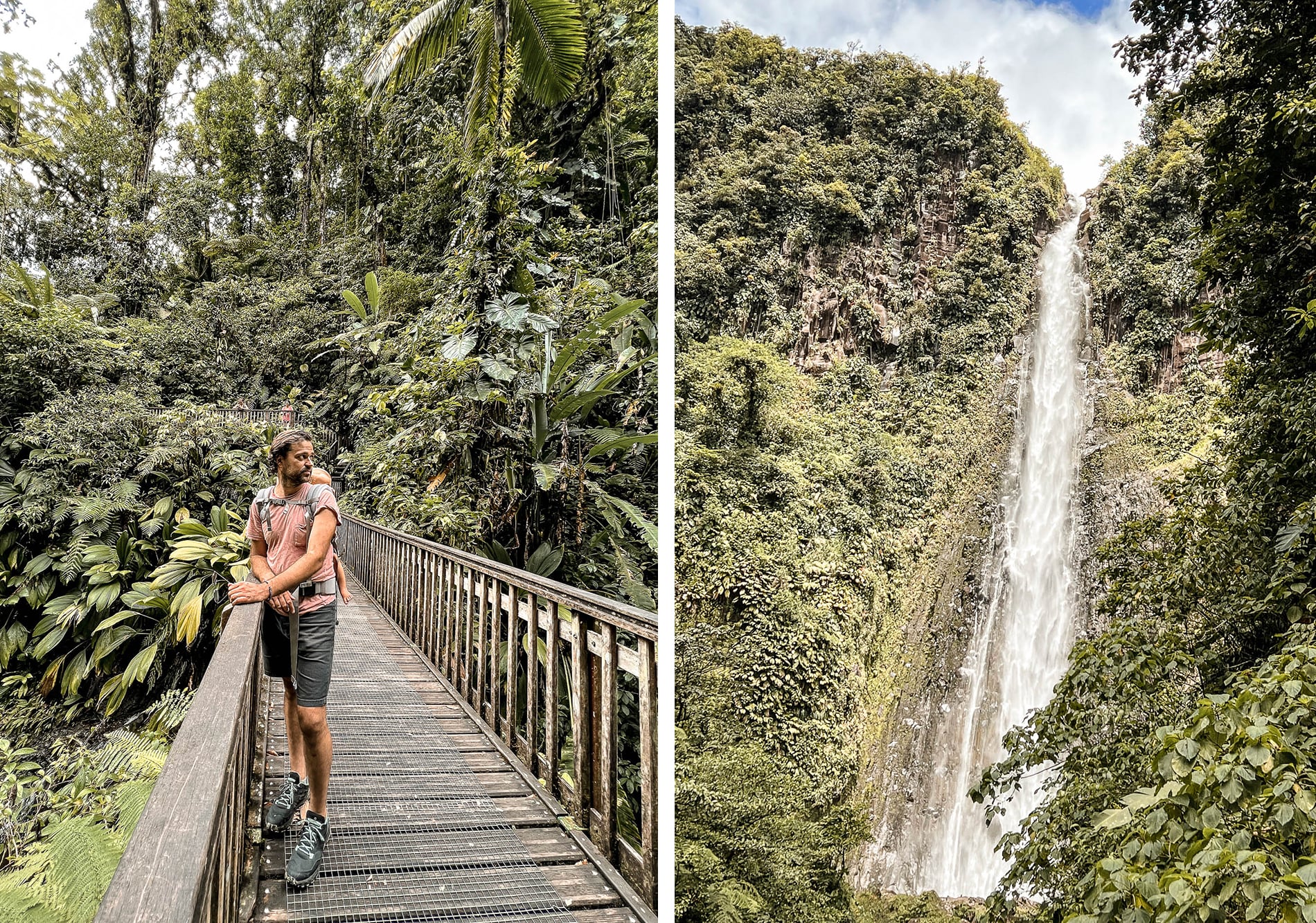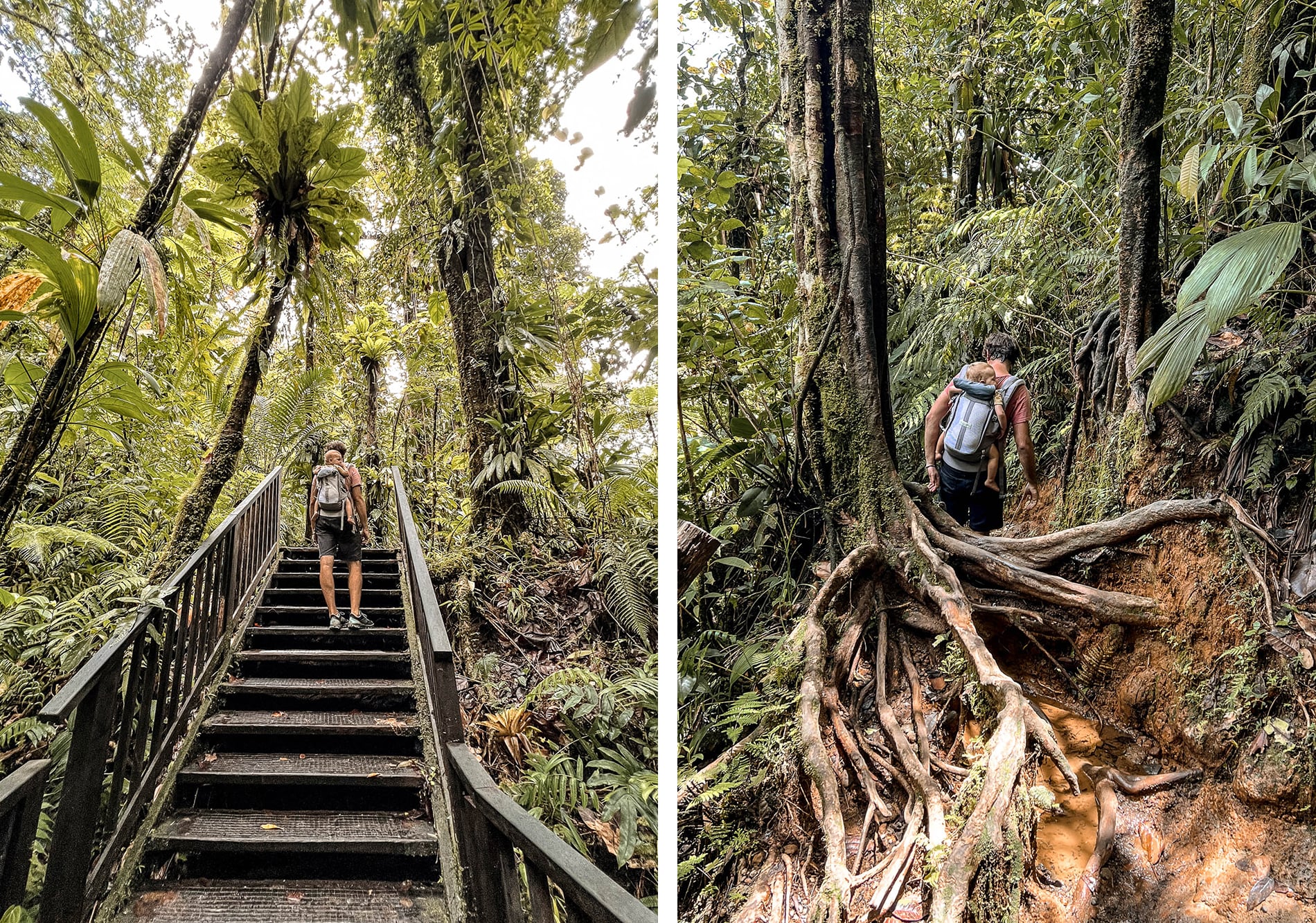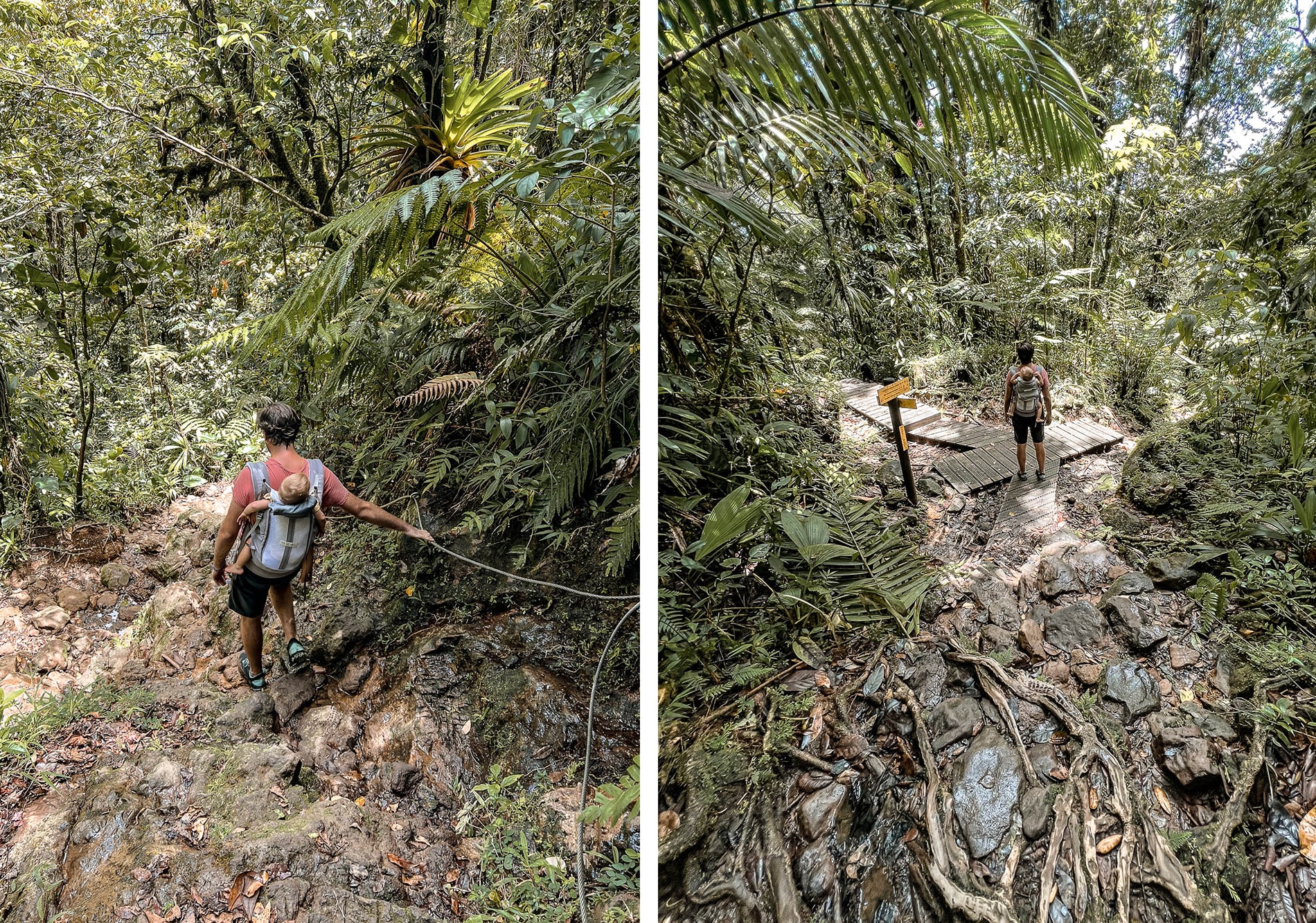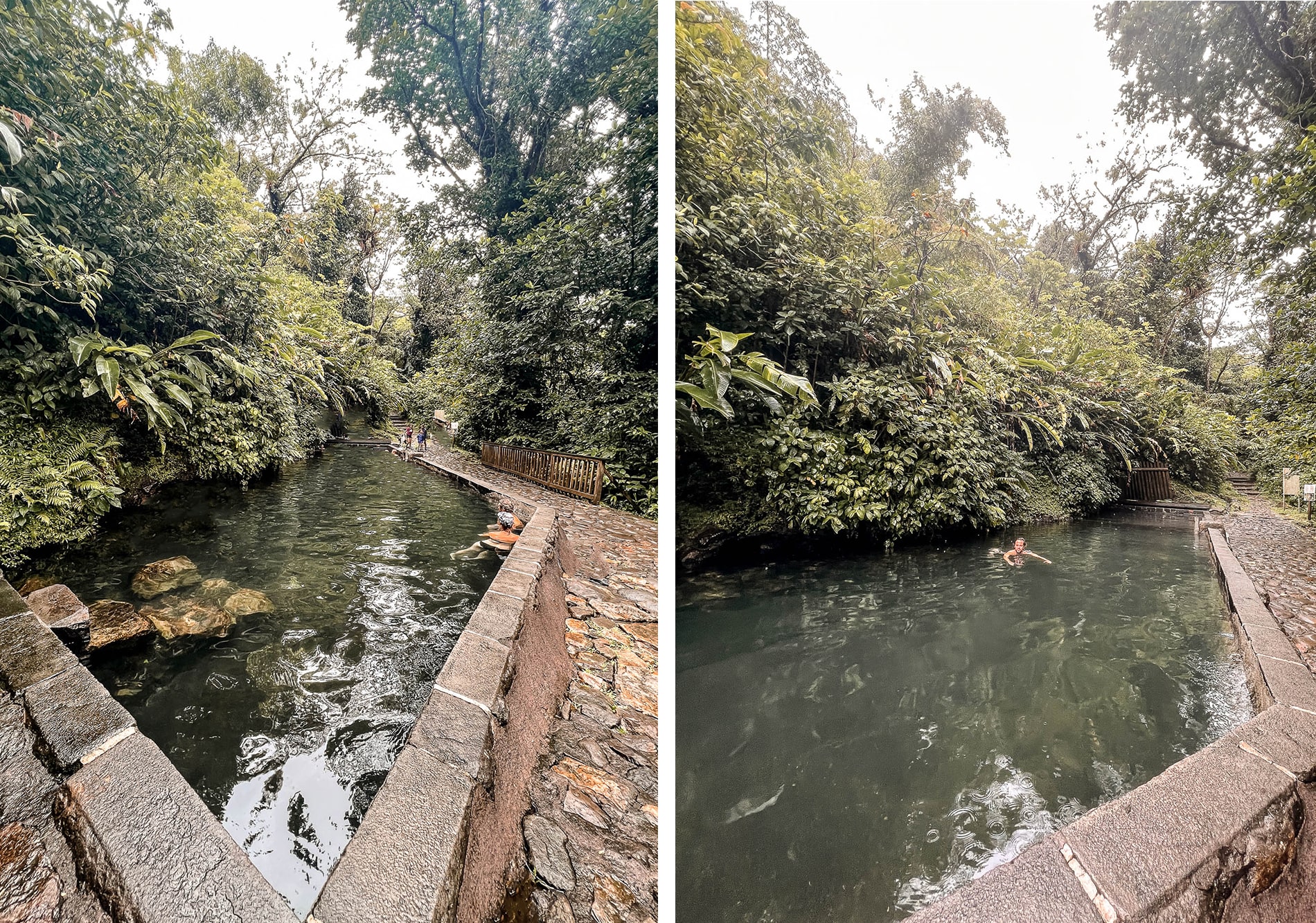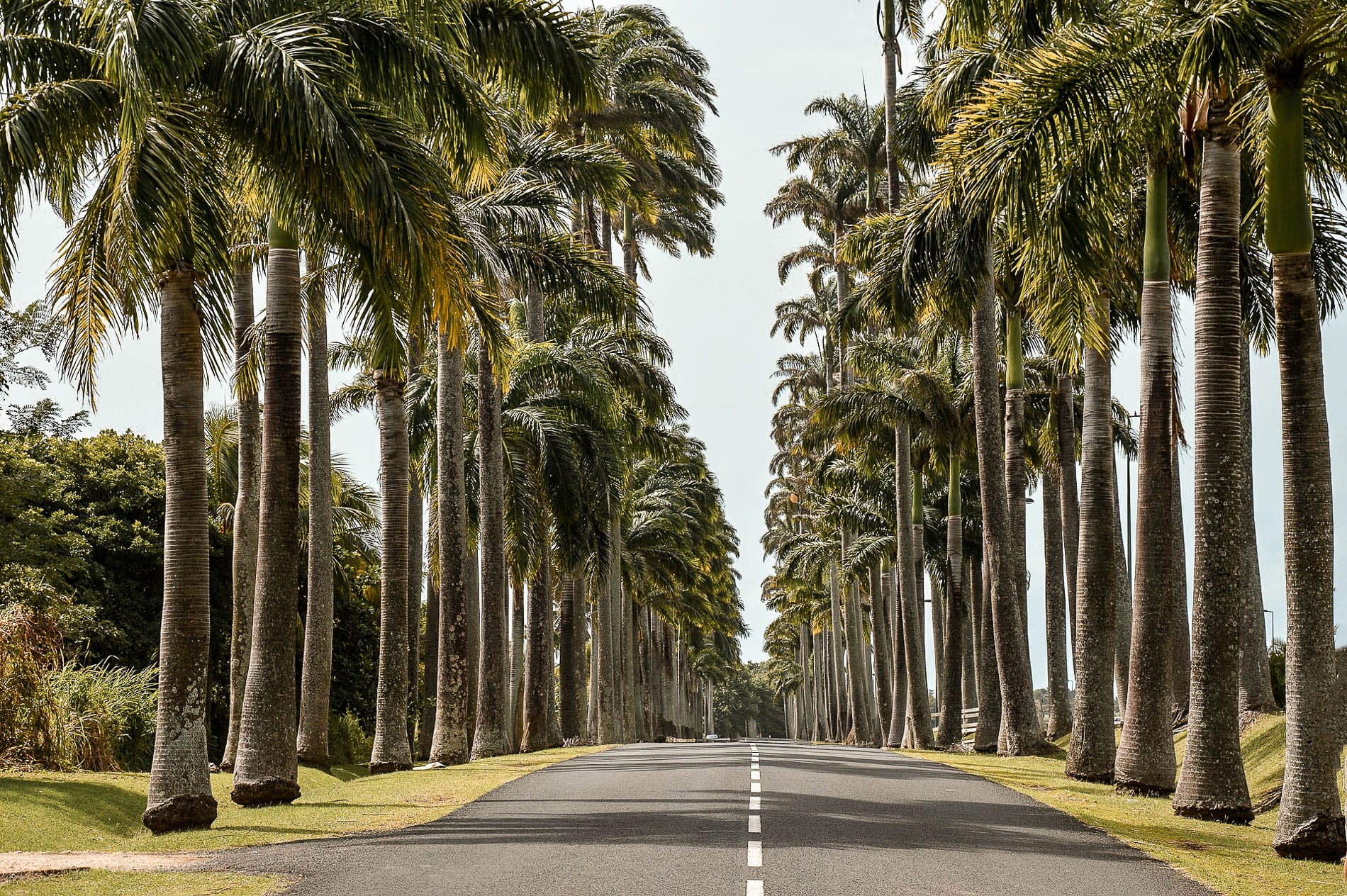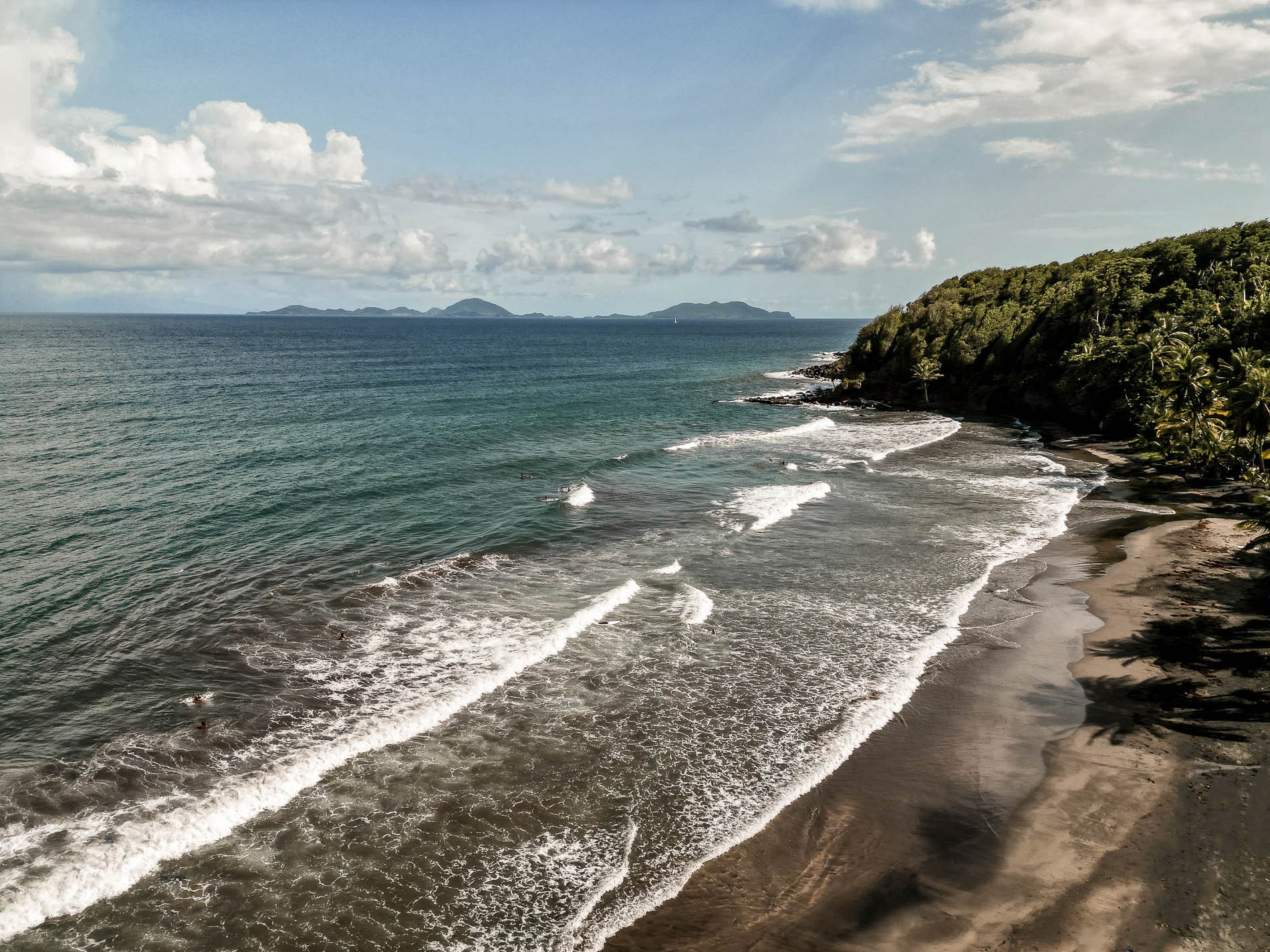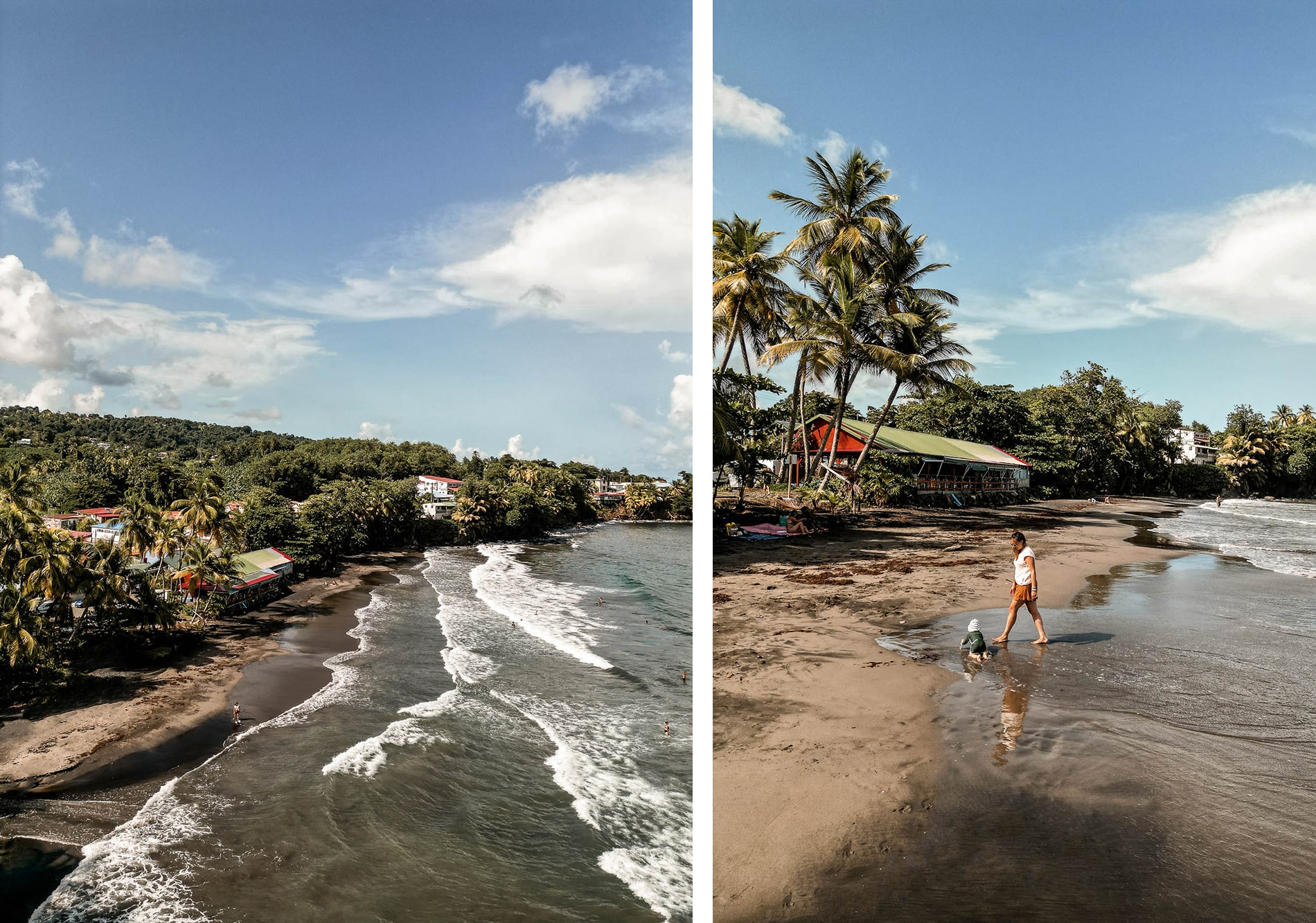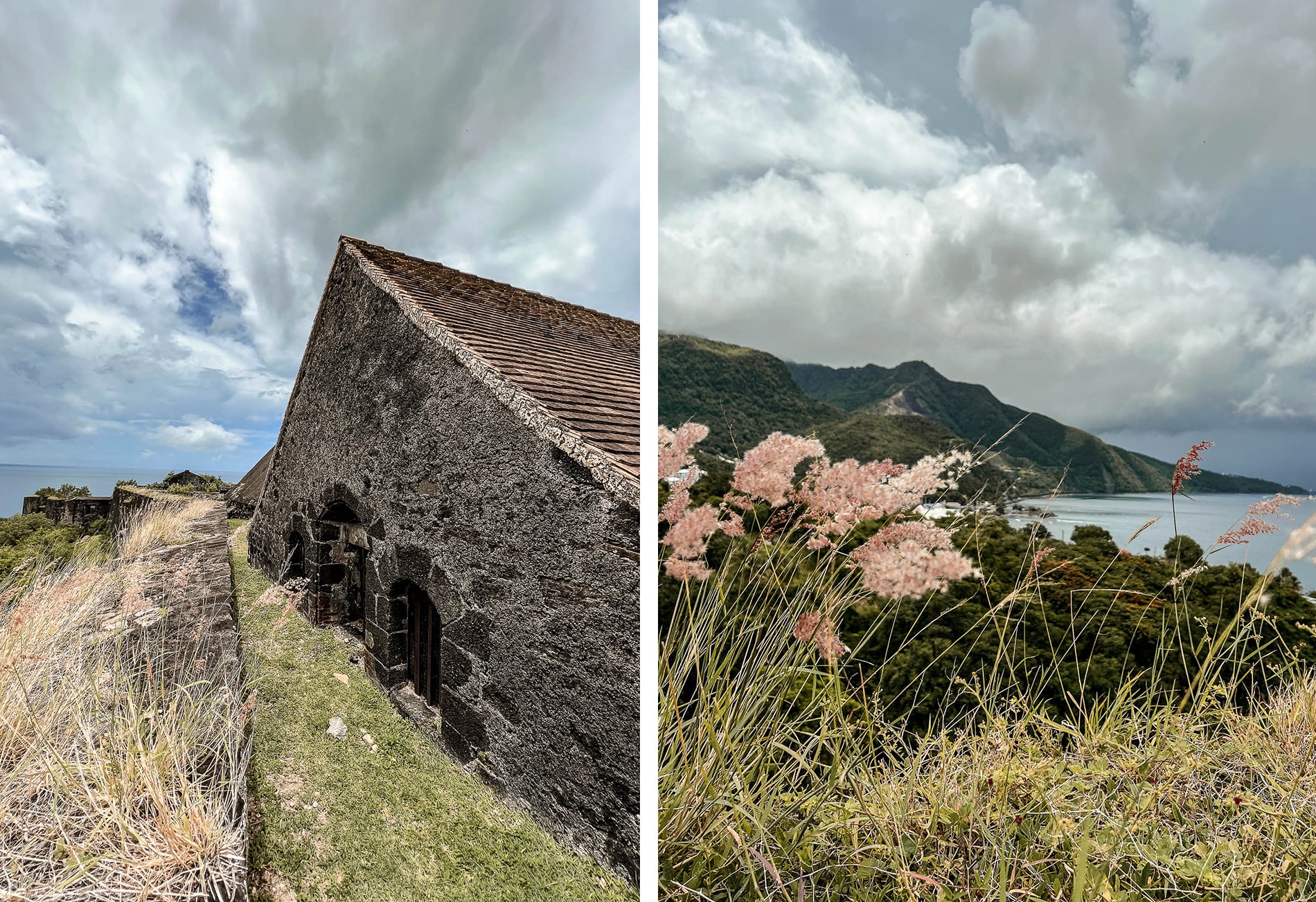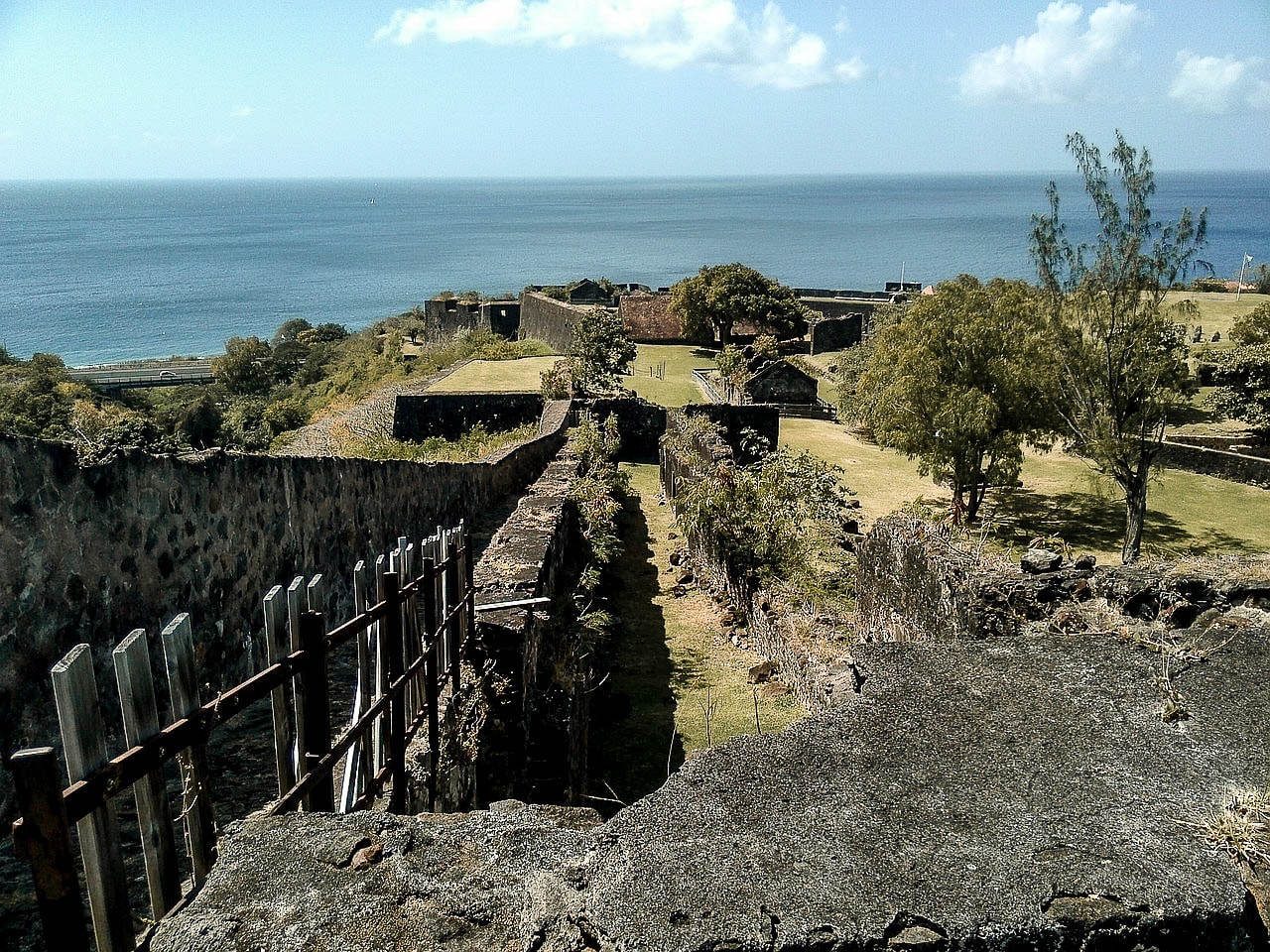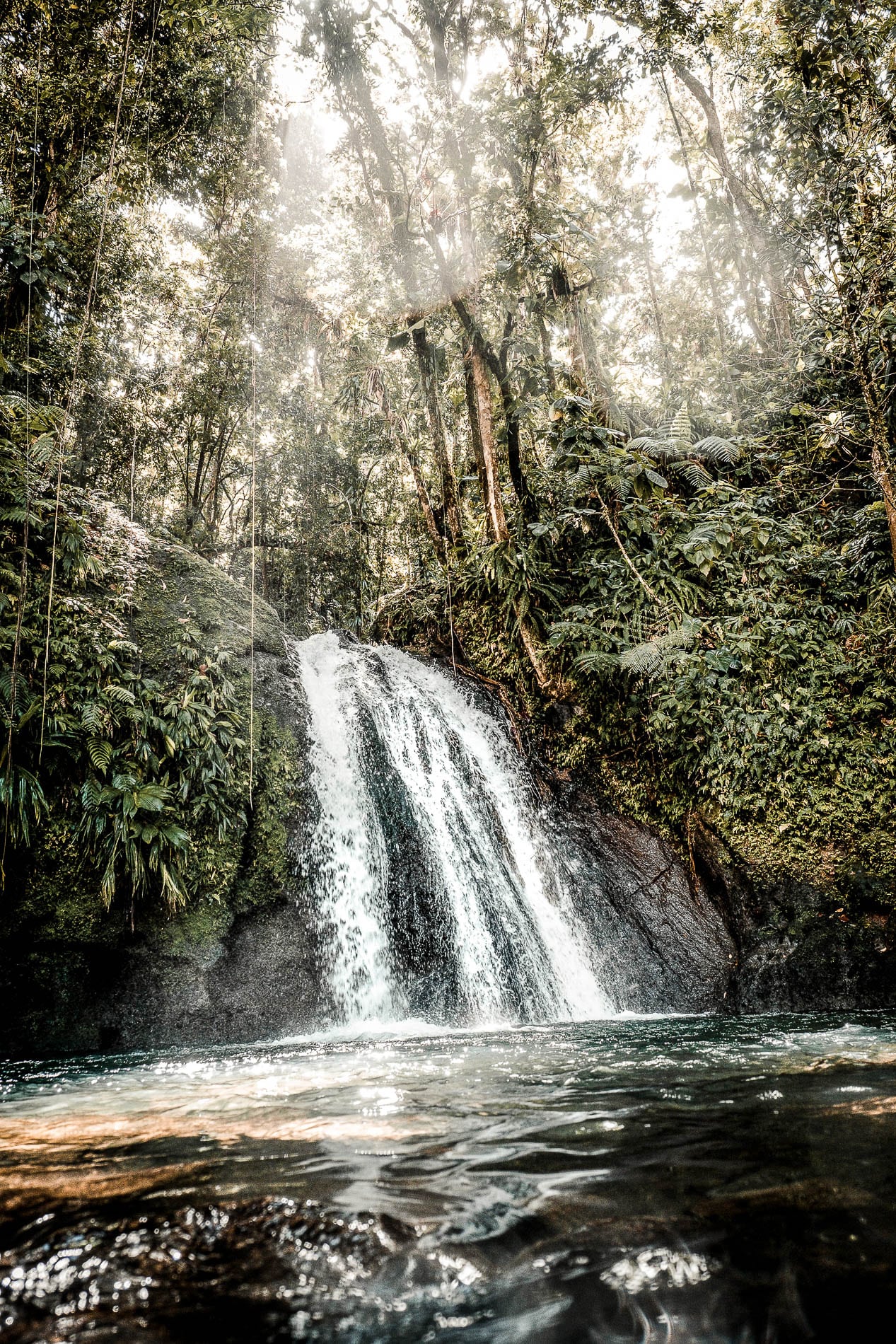
What to do in low-lying areas? You’ve decided to discover Guadeloupe during your trip, but you don’t yet know what you can’t miss in Basse-Terre? Discover the lush wing of the Guadeloupean butterfly, which promises contrasting and varied panoramas of Grande-Terre.
We couldn’t imagine coming to Guadeloupe without taking the time to discover Basse-Terre. In fact, many people don’t take the time to stay there, and are content to come just for the day. It’s true that from Saint-François, you can reach Deshaies in 1h30 if you don’t have traffic jams. But it’s hard to properly explore the attractions of this part of the island without spending a few days here. Guadeloupe is divided into two islands linked by a bridge: Grande-Terre to the north and Basse-Terre to the south.
Basse-Terre is much greener than Grande Terre due to its topography and the volcano « The Soufrière » which has the ability to trap clouds, accentuating precipitation. It’s true that in August, you’ll probably get more rain on the Basse-Terre side than Grande-Terre, as the climate is more tropical and therefore hot and humid. During our trip, we had rain almost every day, either in the early morning or at the end of the day, which didn’t stop us from discovering the island; but every morning we had to plan or review our outings, consulting the weather forecast and asking the locals for their opinion. The only heavy downpour we had was on the penultimate day of our trip, when we were stuck in our bungalow for most of the day.
Let’s discover the green wing of the Guadeloupe butterfly. To discover Basse-Terre, we have chosen Deshaies as a drop-off point because there are numerous activities and points of interest within a 30-minute drive. We also stayed in Trois-Rivières, as this town hosts the departure port to get to Les Saintes located just across the road, but also to avoid getting up too early to discover the many waterfalls in the vicinity.
Feel free to consult all our articles on Guadeloupe to help you plan your trip:
TABLE OF CONTENTS :
| DESHAIES, GRANDE ANSE BEACH, LA PERLE BEACH AND HIKING
-
Grande Anse and La Perle beaches
Let’s start with the attractions of northern Basse Terre, as it was in the town of Deshaies that we first put down our suitcases. A lively fisherman’s town, nestled between hills that provide quick access to the western part of the island. Located on the north-western tip of Guadeloupe, Deshaies is a great place to get away from it all. Many choose to make it their pied-à-terre to visit Basse-Terre, but we stayed a few days in a little haven of peace that I’ll tell you about here.
The town of Deshaies boasts a number of attractive tourist attractions:
- Grande Anse beach
- The Perle beach
Grande-Anse is an iconic beach in Basse-Terre, forming a long two-kilometre crescent. Nestling on the edge of the rainforest and the high hills surrounding Deshaies, you’re sure to fall under the spell of this beach with its untouched natural surroundings. It’s also a great spot for watching the sunset, which you can enjoy from a beachside bar or more quietly, listening to the sound of the waves. These assets make it a popular beach with travelers and locals alike, so beware of the crowds on certain days.
As for swimming, it also lives up to its promise, but be careful with children, as the waves can be quite rough on certain days. We enjoyed going to this beach quite early with Gabriel, who was 1 at the time of the trip, as there were few people, plenty of shade under the coconut palms, and translucent water!
On Grande Anse beach, you’ll find everything you need for a great day out:
- A ample free parking (which fills up very quickly)
- Toilets and showers
- A variety of restaurants
If you’re looking for a quieter, less crowded beach that’s also full of charm, opt for The beach at La Perle with its seaside coconut palms. Shimmering colors at sunset, blond sand and translucent waters, this is a magnificent beach that we recommend. As in Grande Anse, you’ll find some restaurants as well as a shower.
It is also possible to link these two beaches on foot, via the seafront. About a 45-minute walk, but inaccessible by stroller (baby carrier compulsory).
-
Gadet viewpoint and Anse Tillet
Located on the roadside, I recommend driving to the Gadet viewpoint overlooking Grande Anse beach.
Heading down from Sainte Rose towards Deshaies, lies L’anse tillet, a magnificent beach, and little frequented in comparison with the beaches of la perle and grande anse. Plage de l’Anse Tillet is the very first beach you’ll come across on the road. The easiest way is to park at the bottom of the road, leave your car and walk down the path for a few minutes to discover this pretty beach. I heard it was naturist from the locals but I haven’t had confirmation! This cove is not really recommended for families, as the waves are quite strong, making swimming less than ideal.
If you really want to explore all the beaches of Deshaies, go to the beach of Petite-Anse, Leroux and l’Anse Rifflet which are just as charming, small sandy beaches with few crowds.
-
Hiking at La trace du littoral de Deshaies
For hiking enthusiasts, we have seen that there is a well-marked hike, which allows you to‘survey along the Deshaies coastline from the town centre to Plage de la Perle, via the ascent of Gros Morne and the beach at Grande Anse. The locals recommended it as an easy hike, lasting between 2h30 and 3h, or about 5km.
| BOTANICAL GARDEN
Another point of interest in Deshaies is its magnificent botanical garden set in the hills towards Pointe Noire. Created in the late 90s in the garden of a property once owned by Coluche, it has been open to the public since 2001. This young floral park features around 1000 species of tropical plant varieties from all over the world.
There’s also an area dedicated to trees, with palm trees, a baobab and breadfruit trees typical of Guadeloupe and endemic to the island. One area is dedicated to orchids, another to cacti, followed by bougainvillea and hibiscus. Alleys of ferns.
The garden is lush and green, with relaxing areas where you can relax and enjoy the peace and quiet, the sound of the waterfalls and the torrent of water. The rather wide path is very easy to access with a baby carriage.
The park also devotes part of its space to animals with an area for pink flamingos, another for macaws and parrots, and an aviary. This is certainly the negative point of this park. Indeed, he could have made do with his plant palette, without having to lock up flamingos that have no business being in the West Indies, or macaws whose right to fly has been taken away by clipping part of their wings and presenting them as happy to put on a show for us. An outdated concept that it’s high time we stopped endorsing! I should point out that this information was given to us by a person working in the park, whom we asked about the condition of these animals confined in the botanical garden. The answer was very clear: the animals are used to people and feeding, and tourists love to see them!
Expect to pay €15/p to enter, and about 2 hours for a leisurely stroll. Check the opening times too, as it closes early.
| VANILLERAIE DE CHEZ “VANIGWA
Near Deshaies, we offer you an agricultural discovery,that of a vanilla plantation and not just any old one – that of a vanille d’exception awarded top prize at the Concours Agricole de Paris in 2022, I present to you « Vanigwa». The last time we visited a vanilla plantation was in New Caledonia on the island of lifou., read the article here.
Who says exceptional vanilla, says place that is deserved! We found out about the vanilla plantation that very morning, but the tour had already begun! Cédric, the owner of the premises, kindly accepted us and gave us all the instructions we needed to find him. Meet at a shopping mall parking lot near Deshaies, then a 30-minute drive to his farm nestled at the end of a lane, in the middle of a forest managed by the ONF. His estate is totally integrated into the heart of the forest, in symbiosis with the plantations of this ecosystem. We’d never have found it, and that’s part of the charm of this visit.
After an introduction to the plant, which is naturally an orchid, you’ll understand the specifics of its culture and the difficulty of obtaining a quality product, but also why this product was no longer produced in Guadeloupe. The explanations given about the different vanillas in the world are very educational, so they’re easy to understand. Then comes the phase where you can smell the beans and taste by-products such as vanilla syrup, which can be enjoyed with water or rum. A nice variation on the traditional ti’punch.
Of course, you can also take advantage of this moment to shop and bring a top-quality product that will please the most epicurean friends and family members. A lovely, easy-to-carry gift to bring back from Guadeloupe.
We learned from Cédric that the various vanillas sold to you on the markets in Guadeloupe mainly come from Madagascar, as Guadeloupe vanilla is rarer and more expensive to produce. Chefs from restaurants, hotels and people looking for a genuine, authentic, quality product come here to source their produce. His estate is extremely well hidden and guarded from prying eyes.
| CETACEAN WATCHING BETWEEN DESHAIES AND POINTE NOIRE
It is quite possible to observe cetaceans all year round in Guadeloupe. Boat departures are between Deshaies and Pointe Noire, at Baille Argent fishing port. (meet at the boat gas station pontoon). It’s an outing I’d recommend you make, as this sea area is protected from the wind and therefore ideal for observing dolphins, sperm whales, killer whales and whales. Killer whales can also sometimes be seen here, and from December to mid-May, humpback whales come to calve in the Caribbean area as in the Samana Bay in the Dominican Republic. If you don’t have time to stop here, you can also see them on Grande-Terre, read the article.
Expect to pay around €70/adult and €45 for children under 12 (children under 3 are not accepted). A tax of 1€/p will also be charged to finance the protection of natural escapes.
The boat trip lasts about 3h30 to 4h and is organized every day from 8am to 12h30 with I recommend this excursion. Think about book in advance because the maximum number of passengers on board is 12, and it’s often full. Don’t forget that this tour doesn’t promise 100% whale watching – it’s a question of luck and the right conditions!
➡️ Check availability and book the tour here
| BOILING, MALENDURE BEACH AND TURTLES
Let’s go down to the west side of Basse-Terre. A part of the island that’s interesting for exploring marine wildlife in particular, on the Bouillante side.
This small town is named after the hot springs from Soufrière volcano, which you can enjoy right in the heart of the village, at the mouth of the « Ravine Blanche », opposite the geothermal power plant. A few minutes’ dip in a warm sea against a backdrop of black sand is a bit of a folkloric experience, especially when outside temperatures and humidity levels are at their highest! We were only able to test this bathing point as the other sites were closed or inaccessible, but it is normally possible to access the “curé’s bath ” at L’Anse à Sable. To be honest with you, we didn’t enjoy this little bath any more than we did. We were expecting a peaceful place in the middle of nature (not on the roadside), surrounded by vegetation, a little more intimate. In the end, the place is next to a power station, everyone clumps together in the same place, there was glass and garbage, on the rocks where you can leave your things. We’ve seen so much better elsewhere, so inevitably we were disappointed with the place.
I’ve heard of a hike in the Parc de la Source, a 10-hectare park that offers pleasant moments with family and friends in Bouillante, close to the famous Cousteau Reserve.
➡️ Check availability and book your hike in Parc de la Source here
After this little mouthwash, we headed for Malendure beach at the cove bearing the same name. This beach is known for green turtle watching. Part of this beach is covered in sea grass beds, shallow underwater areas where seaweed grows that turtles love, making it easy to observe them snorkeling when they’re feeding. Swimming from the beach is therefore easily accessible, since it’s an area with little current. It allows as many people as possible, good swimmers or not, to have the chance to enjoy it, as not everyone has the opportunity or even the budget to go scuba diving to observe the marine fauna.
Of course, this easy access to turtles means we need to be extra vigilant about how we behave around them. So be careful not to touch or disturb them, and make sure you only look at them and don’t get too close if you want the magic to last. I’d even advise you to go early in the morning or late in the day to avoid the crowds and noise (because this beach is far from being secret and deserted). You’ll have a better chance of spotting them in peace.
Close to this spot, walking enthusiasts can enjoy a stroll of a few kilometers along the seafront, easily accessible, from the Petit Malendure beach offering notably beautiful viewpoints over the ilets pigeon, in the heart of the Cousteau reserve. It’s also here that diving and snorkeling enthusiasts can discover the reserve’s magnificent seabed. And of course, divers that we are, it’s all about theThis is what we’ve chosen to do for an afternoon.
| DIVING IN THE COUSTEAU RESERVE
The Cousteau Reserve on Basse Terre is a jewel of diving. Several diving clubs are based in Bouillante, where strict regulations are in place for access to the reserve. Accreditations are given to each club so as not to overload the site with divers and to ensure that the site is not overloaded « snorkelers ». (yes, because it is also possible to snorkeling in the Cousteau reserve, check availability here)
We have chosen the club healthy hours, a modern club with experienced French-speaking instructors, two boats and flawless organization, where divers are pampered and have nothing to do, since the club manages absolutely everything from start to finish. Located high up, just opposite the ilets pigeon, it features a restaurant, a beautiful sea view and access to the pontoon below. It’s an ideal club for exploring the reserve’s seabed, as it’s only a 10-minute boat ride from the dive sites.
We’d heard bad things about the Cousteau reserve, that these spots weren’t what they used to be and that it was a bit overcrowded. Well, we were stunned by the beauty of the 2 dives we were able to make. Diving conditions are ideal, with warm waters, few currents and a wealth of marine life, enabling beginners in particular to discover this activity, on a dream site that is extremely well protected. The corals and coral spuds are brightly colored, perfectly healthy and en masse! There’s so much to see, you won’t know where to look!
The relief is essentially made up of drop-offs where coral shelters a multitude of reef fish.. Here, you won’t find any big fish, but a multitude of small, colorful fish (angelfish, trumpetfish, parrotfish etc.), trunkfish, moray eels, sea sponges and corals of many shapes and colors. You can also expect to see nested turtles rarely approaching the edge unlike green turtles, but also having the potential visit of tazards. (It is a species of fish belonging to the Scombridae family, like tuna and mackerel )
The Cousteau reserve is made up of 7 spots and the one we’ve plunged into is that of theAquarium. I might as well tell you that it doesn’t steal its name, as the trip was so rich in discoveries in water where visibility was 15 to 20 meters and where some divers on our boat were even lucky enough to observe a seahorse. In any case, let yourself be carried away and observe what’s in front of you, and you’ll be pleasantly surprised.
Only disappointment perhaps, dives being extremely regulatedwith a limited number of boats and therefore of divers per spot at the same time, we couldn’t change locations between our 2 dives. Indeed, other clubs had already taken the buoys, forcing our boat to repeat the same spot twice in a row. So be sure to ask about the spots on offer if you’re doing them all in one day, as we did.. However, this will not have had the effect of leaving us with a bad memory. Despite everything, these 2 dives will remain among the most beautiful we’ve made. Incidentally, if you’d like to see the sculpted bust of Commandant Cousteau, it can be found on the spot “ coral garden ” at a depth of 12 meters.
The Réserve Cousteau is a must-see in Guadeloupe, an exceptional site to discover.
➡️ Check availability and book your dive here
For this outing, we called on a babysitter extraordinaire who looked after Gabriel on several of our excursions to Grande-Terre and Basse-Terre. She is a smiling, generous woman who takes such good care of the children that I can only recommend her to you during your stay in Guadeloupe. Gabriel was so happy to see her again over several days that we were sad to leave her. She lives in Sainte-Anne but has moved as far as Saint-François and Deshaies. I’ll be happy to e-mail you her contact details. Come from me, because it only works via word of mouth.
| THRILLS IN THE GREAT OUTDOORS
Guadeloupe is an island of contrasts: Basse-Terre is undeniably the place to be for nature lovers, rainforests and hikers, with something to suit all tastes and abilities. That’s why, during your stay, you should consider booking a few thrilling activities, which can be done as a couple or with friends.
I suggest canyoning in the Ravine Chaude canyon to discover the wilds of Guadeloupe while you’re looking for a thrill. This descent is one of the island’s must-do activities.
➡️ Check Ravine chaude availability and book here
For families, you may prefer head for Ti Canyon, a 4-hour adventure in the heart of the Guadeloupe rainforest for children aged 8 and over!
➡️ Check Ti Canyon availability and book here
Finally, not far from the Cousteau reserve and Malendure beach, you can have fun on this canyoning trip in Bourseau. You’ll also be able to try out many different facets of the activity: jumping, abseiling, zip-lining, so you can learn or rediscover this Guadeloupean version of the leisure activity.
➡️ Check availability for the Réserve Cousteau and book here
| THE CRAYFISH WATERFALL
Discovering the green nature of Basse-Terre will inevitably lead you to its various waterfalls. Many of these sites deserve a greater or lesser effort to reveal themselves, and this was partly what guided our choices, given that we were traveling with Gabriel, our 12-month-old son at the time.
The cascade aux écrevisses is located halfway along the D23 road crossing Basse-Terre from east to west, and through the center. At the roadside, a small parking lot gives direct access to the short path leading to the waterfall. All you need to do is It’s a 10-minute walk over a platform to the waterfall (but remember to bring good shoes, as the ground and stones are slippery). The 10-metre-high, shaded terrace leads to a large natural swimming pool where you can take a dip, before disappearing a little further down into the river.
The site is very popular, receiving no less than 200,000 visits a year, which can be a nuisance if you like peace and quiet.
Downstream, the river is rocky, creating numerous shallow water chicanes for calmer bathing. And the further up the river you go, the more peaceful it becomes. You’ll need good shoes to climb the rocks.
The cascade aux écrevisses (crayfish waterfall) is a site that attracts many locals thanks to its accessibility and family-friendly nature. But it’s still hard to find a spot to rest, picnic or simply put your stuff down. A word of advice: come before 9:30 a.m. to get the feeling of being alone in the world. !
| THE ACOMAT JUMP
Further east, a few kilometers from the coast road, halfway between the communes of Pointe Noire and Bouillante, lies one of Basse-Terre’s best-known waterfalls, the Saut d’Acomat.
Here, no prepared path but only a short, but very steep access path, strewn with large roots and rocks. It’s still accessible to all, especially children, but you’ll need to be careful on the way down. I’d also advise you to wear good shoes to avoid slipping, and not to be afraid of heights, as the descent can look impressive from above. (but it works fine when you go down slowly).
Once you’re at the bottom, you can enjoy a swim in the pool or take a dip downstream.
It’s dive from the edge of the pool but don’t venture without experience to the top of the falls for some spectacular jumps (many locals and travellers take the risk, but it’s still very slippery). The site is regularly subject to accidents due to inappropriate behavior.
The waterfall is below us in a clearing a hundred meters high, so the light falls quickly. For a pleasant experience, we recommend you visit between 11am and 3pm.
| THE CARBET FALLS
Let’s head south from Basse-Terre to discover the Carbet Falls, the highest waterfalls in the Lesser Antilles. It’s a landscape that can only be admired on a hike.
Halfway between Trois Rivières and Capesterre-Belle-Eau, at Saint-Sauveur, take the D4 road towards the Carbet Falls. After a 10-15 minute climb up a small mountain road, you’ll reach the parking area. This is the starting point for the falls. After paying your entrance fee (€7/adult and €5/child), you’ll embark on a several-hour hike to reach the 1st waterfall, the largest on the site.
The Carbet Falls are made up of 3 falls, of which the 2 main ones are fall n°1 and fall n°2:
- Lachute n° 2, 110 metres high, is located at only 20-25 minute walk from parking lot. She is already visible from a small lookout where you can see the 2 falls one behind the other. The access, rather easy and accessible to all, is made by wooden footbridges in about twenty minutes. You can easily go there with a baby carrier.
- The chute n°1, 115 meters high, is truly deserving and is an additional 1h30 walk from chute n°2. You’ll need count 1h40 of ascent and 1h45 of descent to appreciate this magnificent waterfall that rises before you. Although the path has been landscaped to secure it along almost the entire route, this waterfall requires a lot of effort to get to and you’ll be sweating it out in the middle of the rainforest. Access is not easy, as it’s quite a climb! There are a lot of steps to climb, and you sometimes have to pass between large intertwining roots, so the terrain can be very slippery or even impassable, if it rained the day before. There are also a few passages with flexible ropes and rigid cables along the rocks, where you have to hold on or even climb. We tried to get there, but unfortunately had to turn back halfway. We had Gabriel in a baby carrier and after 2 hours of walking, we came across several people coming down from the waterfall, who strongly advised us against walking the rest of the way with him. Apparently, the end of the path is too steep and requires a bit of climbing on one section. We didn’t want to take any risks with him on our backs.
- The fall #3, is also accessible by hiking. She is located around twenty minutes from the main site, on the D3 road from Capesterre Belle-Eau. It can be reached on foot in 20-30 minutes. Much lower (20 meters high) than the other 2, it has a large water flow and a swimming pool, which is quite nice. Unfortunately, we were unable to go there as it was closed by the prefecture when we visited in August 2022.
To know more: Access to the falls is subject to prefectoral authorization, which can restrict access from one day to the next, depending on weather conditions. The site is off-limits during heavy rainfall, as the trails regularly fall victim to torrential rains and landslides. What’s more, you’ll have to cross a small river on foot, which can be very dangerous or even forbidden if the water level rises. All this information can be checked on this site, before you get there or once you’re there. Park staff are on hand at the entrance to answer any questions you may have. Access to the falls may not be forbidden in bad weather, but I strongly advise against going, as the weather in Basse-Terre is very changeable. Clouds arrive very quickly and can take you by surprise. At the visitor center, you’ll find everything you need to buy snacks and water, as well as toilets. Finally, Bathing in falls n°1 and n°2 is strictly forbidden.
| THE SOUFRIÈRE VOLCANO
Last but not least, Basse-Terre is famous for its Soufrière volcano. A veritable local legend, the summit of the Antilles rises to a height of 1,467 metres and is not open to the public. In fact, you’ll also need a certain amount of luck and success if you want to see the summit, which is only visible for around 7 days a year.
Nicknamed “the old lady“, its access was severely complicated during the 2004 earthquake when the parking lot was cut off. Today, he is currently done from the village of Saint-Claude, more precisely at the place known as les Bains-jaunes, where a small parking lot has been redeveloped.
For our part, we didn’t go any further with Gabriel, as the weather conditions were not optimal for undertaking the climb. The climb takes around 1 hour 45 minutes. Allow around 4 hours round trip.
When you return, you’ll be rewarded for your efforts, enjoying a hot bath at the starting point of the yellow baths. It has been built here at the end of the 19th century,a large, shallow, stone basin where the springs a hot spring heated by the volcano. A little parenthesis of well-being, very pleasant but attention however to not put your head under water, nor to put water in your mouth, to avoid the danger of the notorious amoebas that may be present in the basin. All recommendations are posted on a sign at the edge of the pond and on the Guadeloupe National Park website. The water is regularly monitored, but there is a slight risk, so be careful, especially with children.
For those who wish, you can leave accompanied by a guide, climb the Soufrière volcano in Guadeloupe and experience a exceptional hiking through its unique rugged landscapes.
➡️ Check availability and book your guided tour in advance here
| ALLEE DUMANOIR
Allée Dumanoir is a 1,200-meter-long avenue lined with around 400 royal palms. It’s a cool photo spot to see, and even more interesting when seen from above with a drone! You’ll pass through on your way to the Chutes du Carbet or not far from Trois-Rivières.
| BLACK SAND BEACHES
Far from the picture-postcard image of Grande-Terre’s paradisiacal beaches, Basse-Terre boasts a host of beautiful, unspoilt black sand beaches fringed by coconut palms, like the one on the Trois-Rivières side with the very large Grande-Anse beach (à ne pas confondre avec celle de Deshaies au nord-ouest qui possède un sable roux). The contrast of colors is sublime, whether on Grande-Anse beach or Plage des Bananiers, a smaller beach located between Trois-Rivières and Capesterre-Belle-Eau. But these beaches are not the most ideal with children, as the sea is often rough in these parts. Indeed, between the fairly powerful waves and current and the sand that sticks everywhere (it’s not as soft as fine white sand), we didn’t stay long around here.
| FORT LOUIS DELGRÈS
The final highlight of our stay in Basse-Terre is Fort Louis Delgrès. Built in the 17th century and enlarged in the 18th and 19th, it marks the entrance to Basse-Terre from Trois-Rivières.
The site is named after Louis Delgrès, a famous figure of color who was promoted to commander of the French colonial army and led the resistance against Napoleon Bonaparte’s officers, who wanted to re-establish slavery in the early 19th century. Absolutely opposed to this idea, Louis Delgrès made decisions that put him in total opposition to the regime. This was followed by a battle with the Emperor’s troops, who had come to impose a return to slavery, forcing the commander and his 300-strong troop to withdraw to the fort. A siege lasting several days, before they were forced to retreat further afield, where they all gave their lives to the cry of “Live free or die”.
The visit to the fort is organized around these events, starting with a memorial retracing the history of these men, and more generally of Guadeloupeans and their quest for freedom. A beautiful monument commemorates these valiant soldiers who died for their ideals, and the walk inside the enclosure recalls their last moments in the fort. But beyond the historical visit, this building positioned high up, offers a beautiful sea views not to be missed.
In August, a small children’s fair was held inside, with sales of local produce, tastings of local products and more. A really great way to chat with Guadeloupeans and get your kids to play on the inflatable trampolines.
A trip to Guadeloupe requires a lot of logistics if you’re looking for something authentic. The service providers I work with to create your tailor-made trip are hand-picked for their ethics and professionalism. They don’t do mass tourism! They will be proposed to you in the quote, only on the booking of a trip from A to Z, i.e. flights, accommodation and activities.
To request a quote and a tailor-made trip to discover the authentic Guadeloupe, contact me by email atcontact@mademoiselle-voyage.fr. I invite you to read the customized travel where I present my business as a licensed travel agency.
Before you leave, don’t forget to consult all our articles on Guadeloupe to help you plan your trip:
